Prologue
Being in December 2019, you wonder why this guy has stopped posting anything related to breakdown of his travel.
Not to throw up excuses but 2019 was an amalgamation of metaphorical waves, with no real highs or lows, no predictable flow or direction.
I am typing this prologue out of Bengaluru airport (which is a first) and this pretty much sums up my year (which ironically involved an awful lot of airports). Further irony is the fact that it all started with my first flight ever to this very airport as my curiosity to explore India kick started, exactly 10 years back in December 2009. So, cheers to a decade that is coming to its Endgame.
2019 also had its share of Goa and Maharashtra tours, which frankly excites me less these days. What I wish to write about are these three unique places that diverged from my usual destinations. If I had to find a common link between these three drastically different locations, it is the element of Earth. Hold on, I will explain. Let’s jump right into it.
Table of Contents
Where are we going?
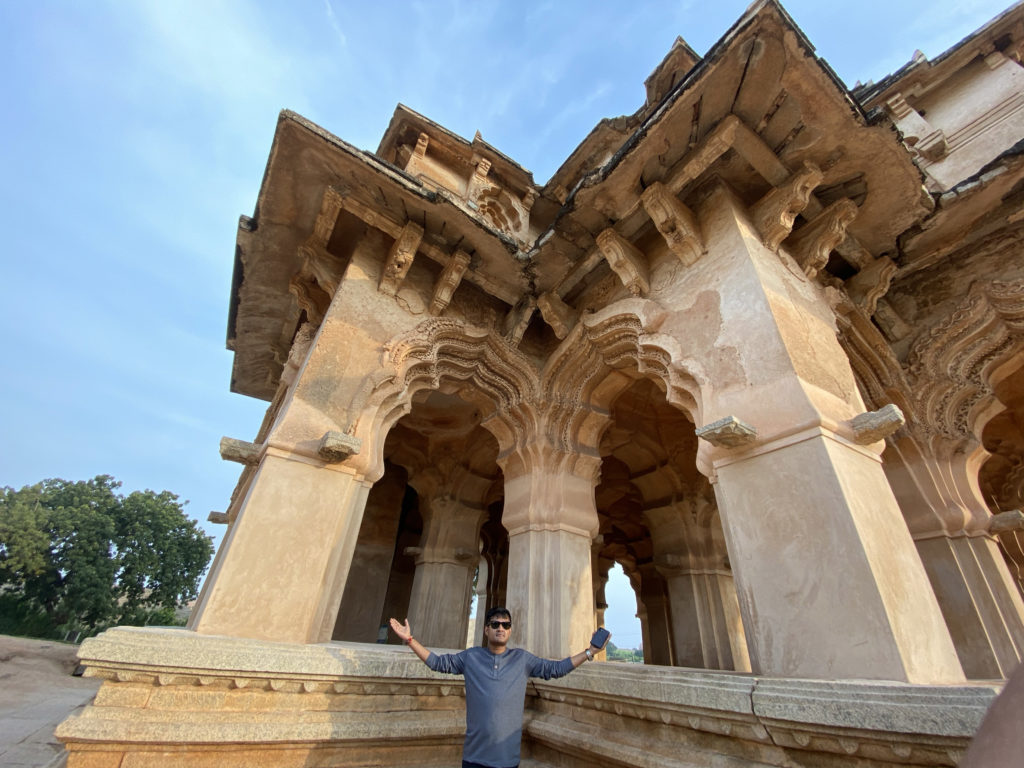
An UNESCO world heritage site located in North Karnataka. This time we are going to see the capital of Vijaynagara empire which was destroyed and ruined in 1565. Hampi is an overnight bus trip of 7 hours from Bengaluru. Remember that connection to Earth in the prologue. So this entire extinct civilization was based off granite rocks carved to create society.
Where did we stay?
Rocky’s guest house. Quite popular with basic rooms in a prime location, the folks running the guest house are very helpful and you will find a large number of foreigner tourists staying here. Their service and food options are top notch, having rooms available at booking.com with per day rate of 3800 INR.
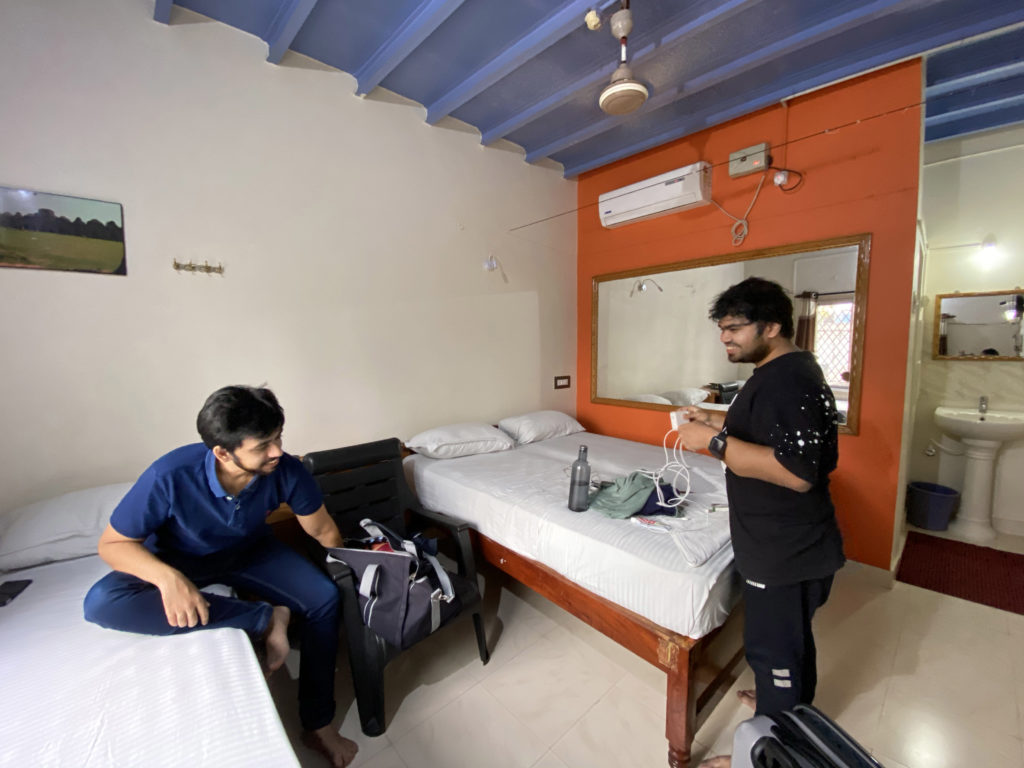
It is possible to get rooms cheaper on spot depending on availability at 2500 INR and go even bare thread basic at hippie island huts at 500 INR per day.
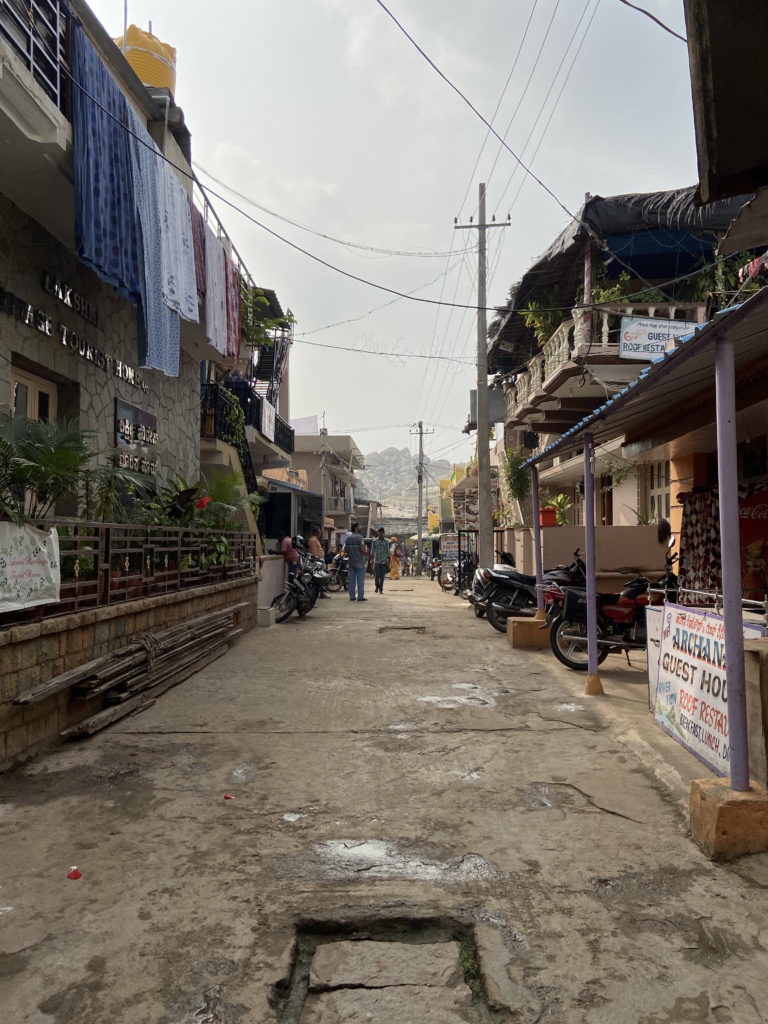
Where did we eat?
Mango Tree
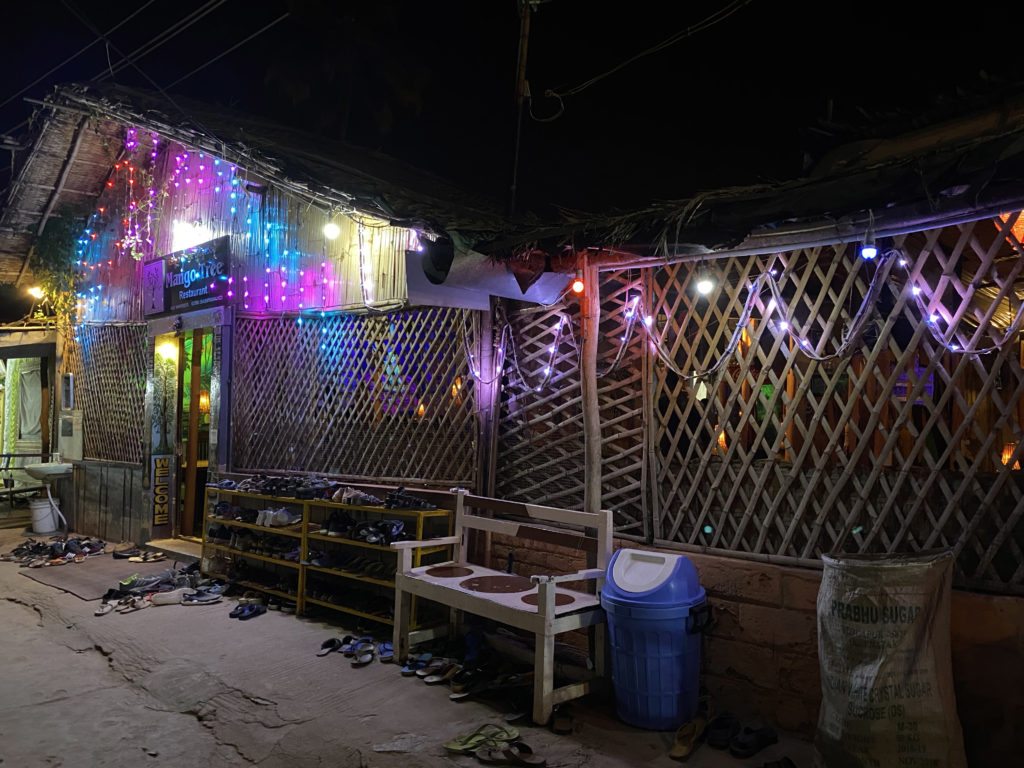
Large space with great vibes, amazing location, great food.
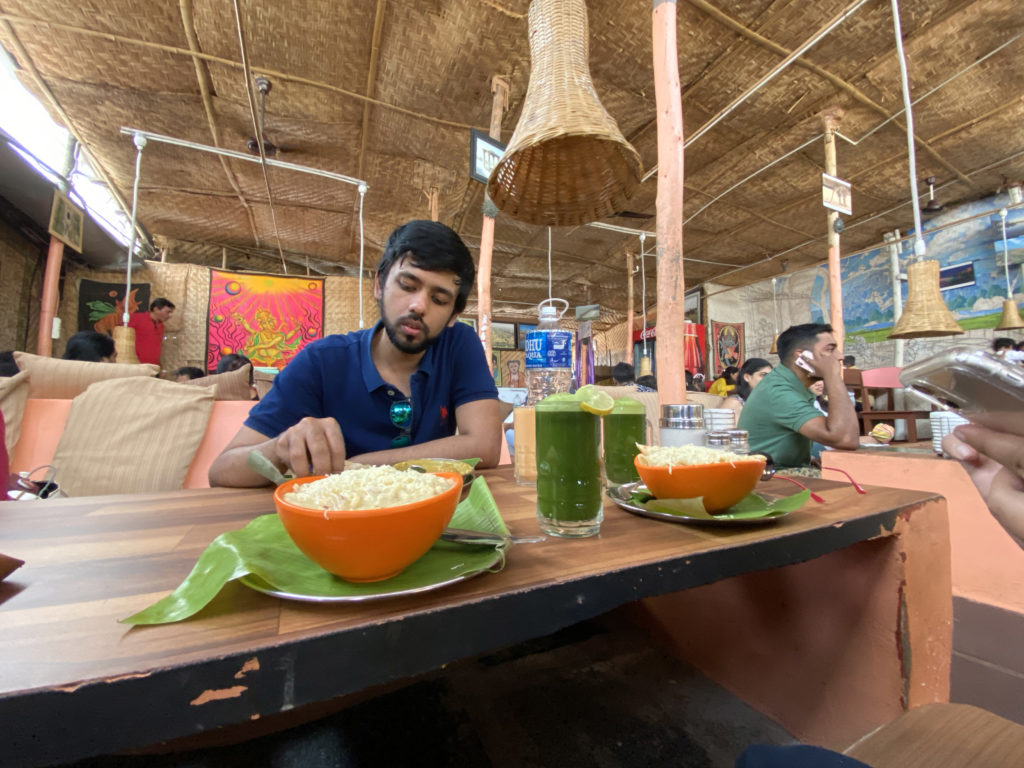
Gopi Guesthouse and Roof
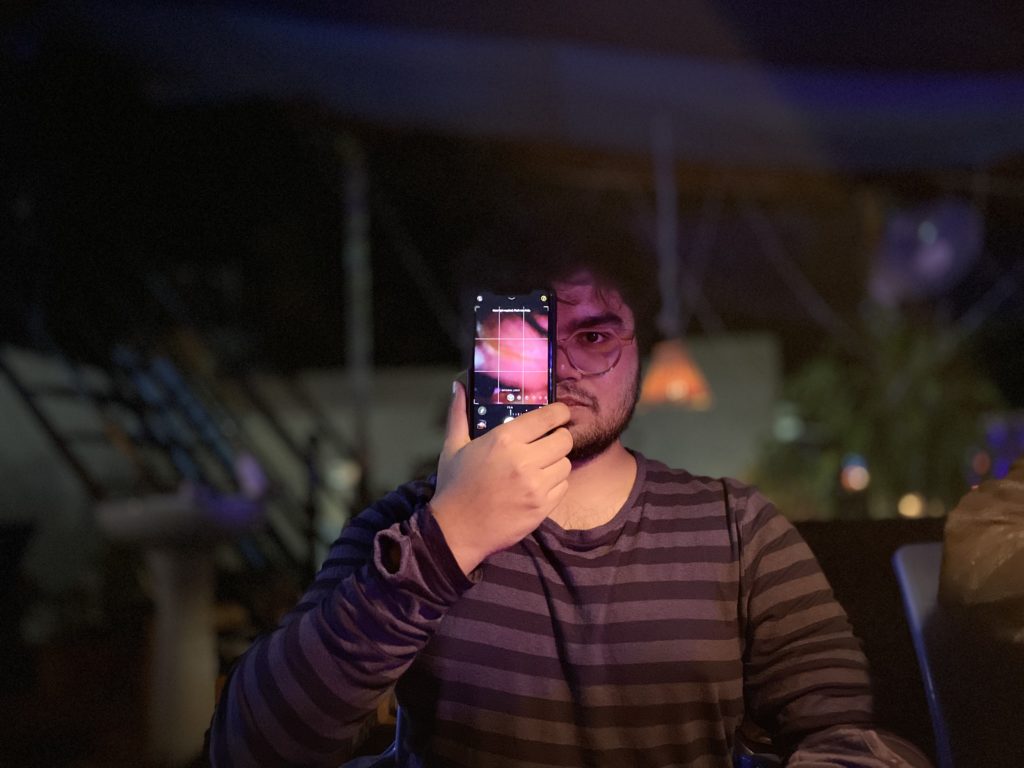
Small rooftop space, amazing location, food is strictly ok.
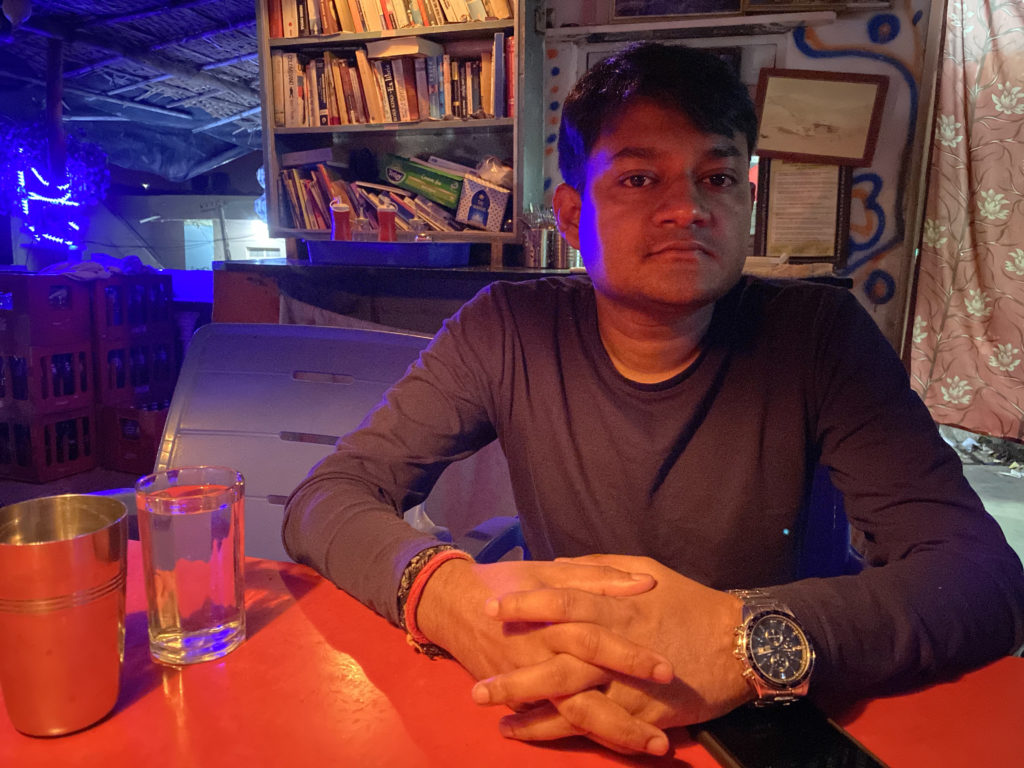
Top Secret
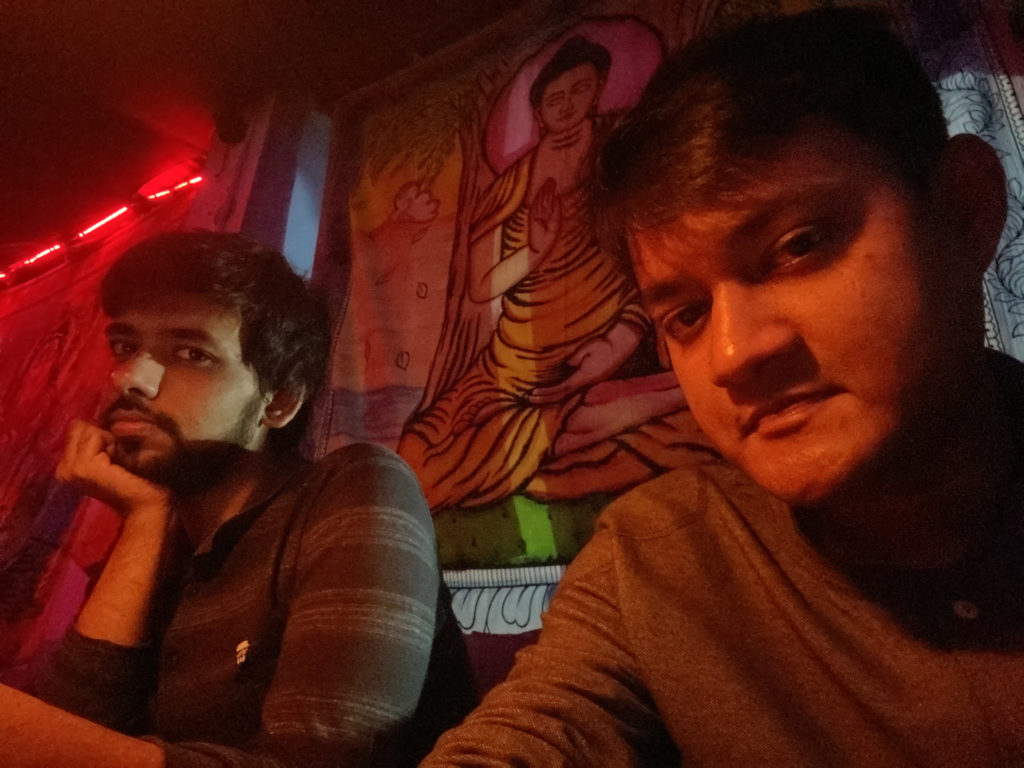
Medium rooftop space, great vibes, top secret location literally, great food.
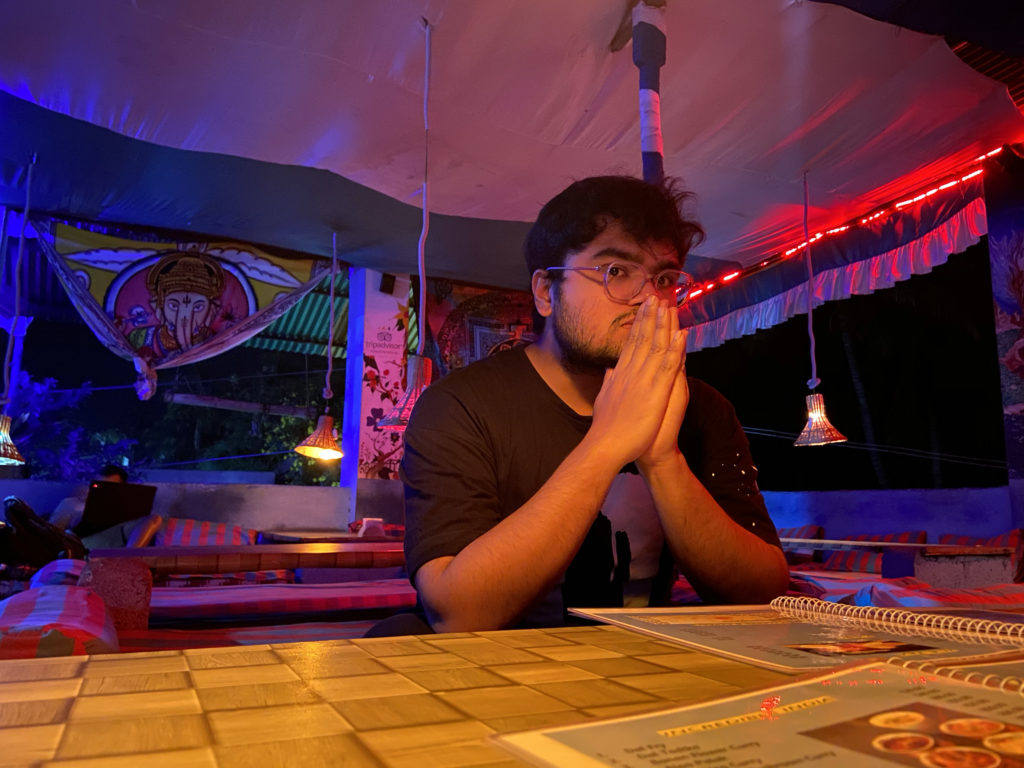
Laughing Buddha (Hippie island)
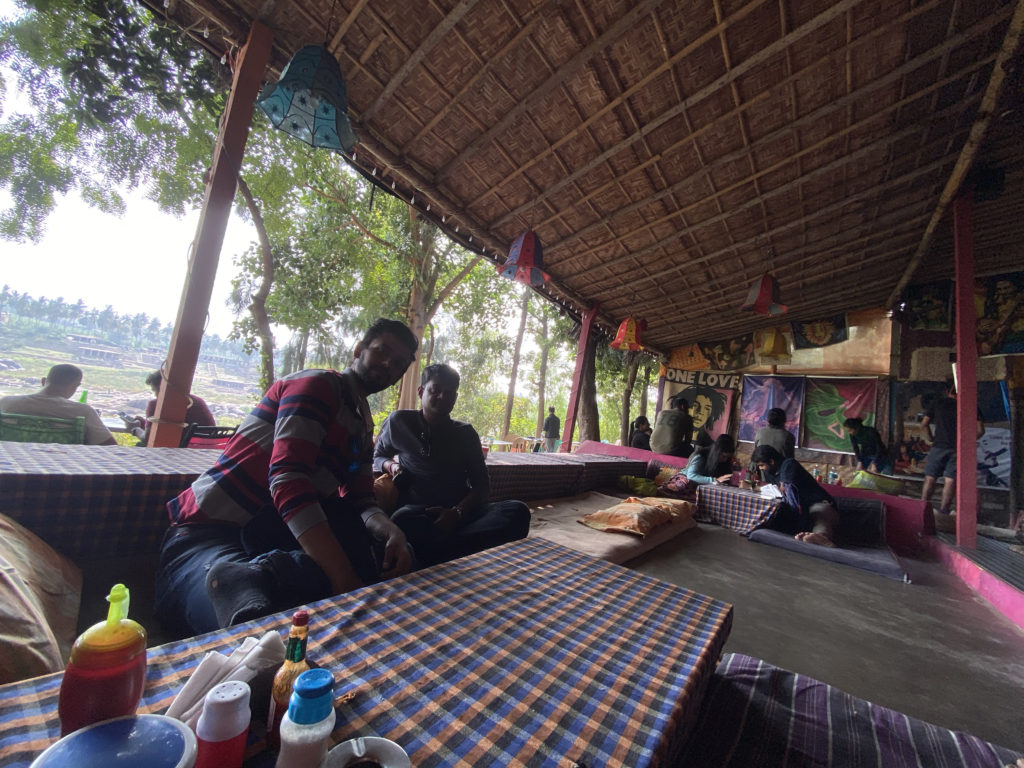
The best place to chill as you see temple area on other side, music at night, braver food options.
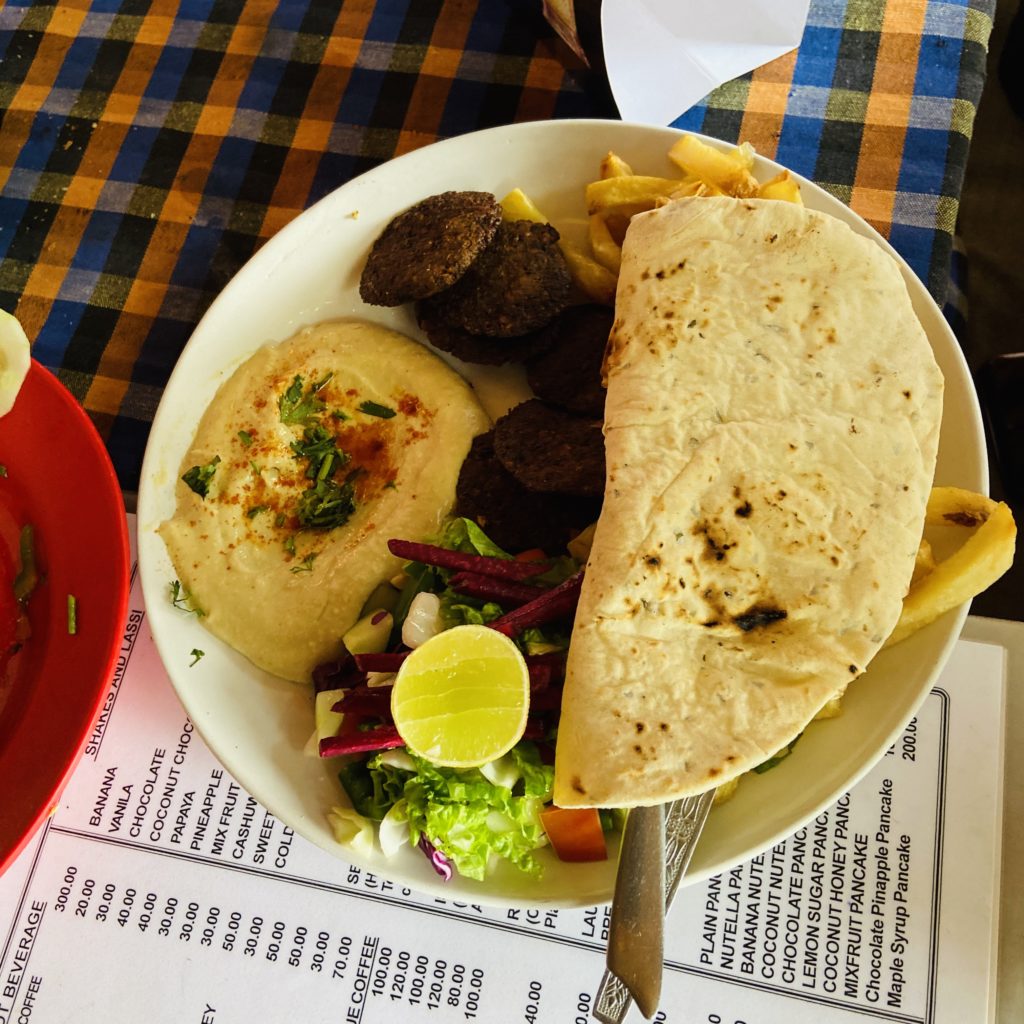
How did we commute?
Due to our limited time and budget, we covered the east and south side of Hampi on foot. Tiring but possible if you are fast enough.
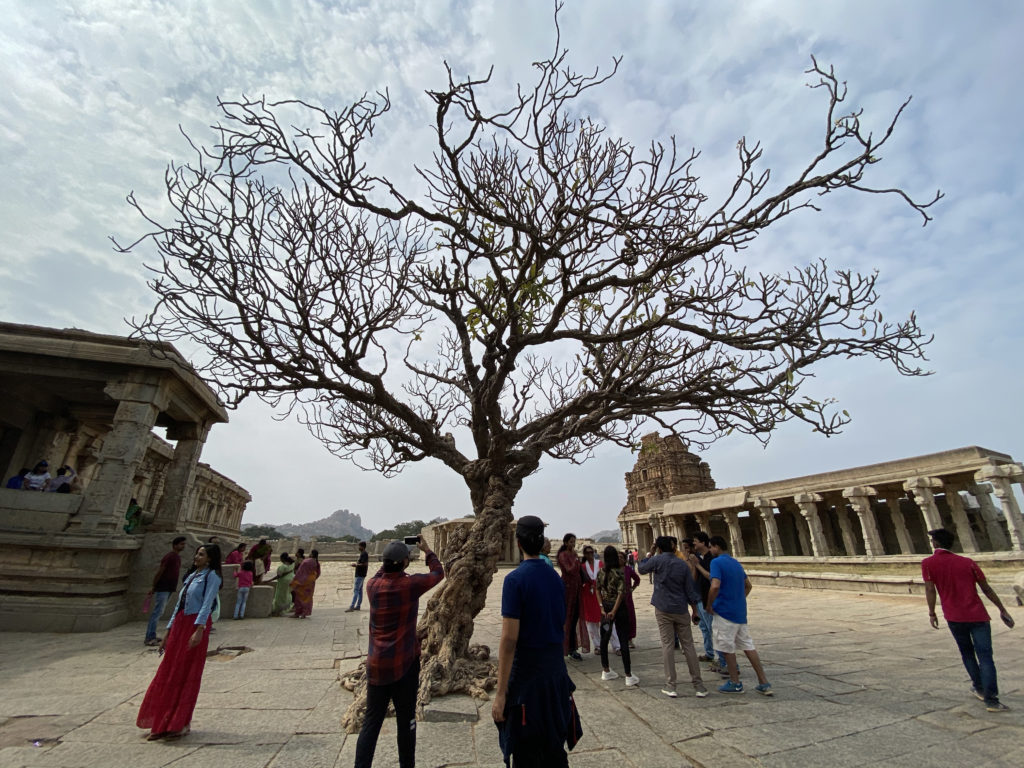
To reach hippie island, we took an auto service to take us to all the major points (1200 INR) and give coracle ride on Sanapur lake (800 INR).
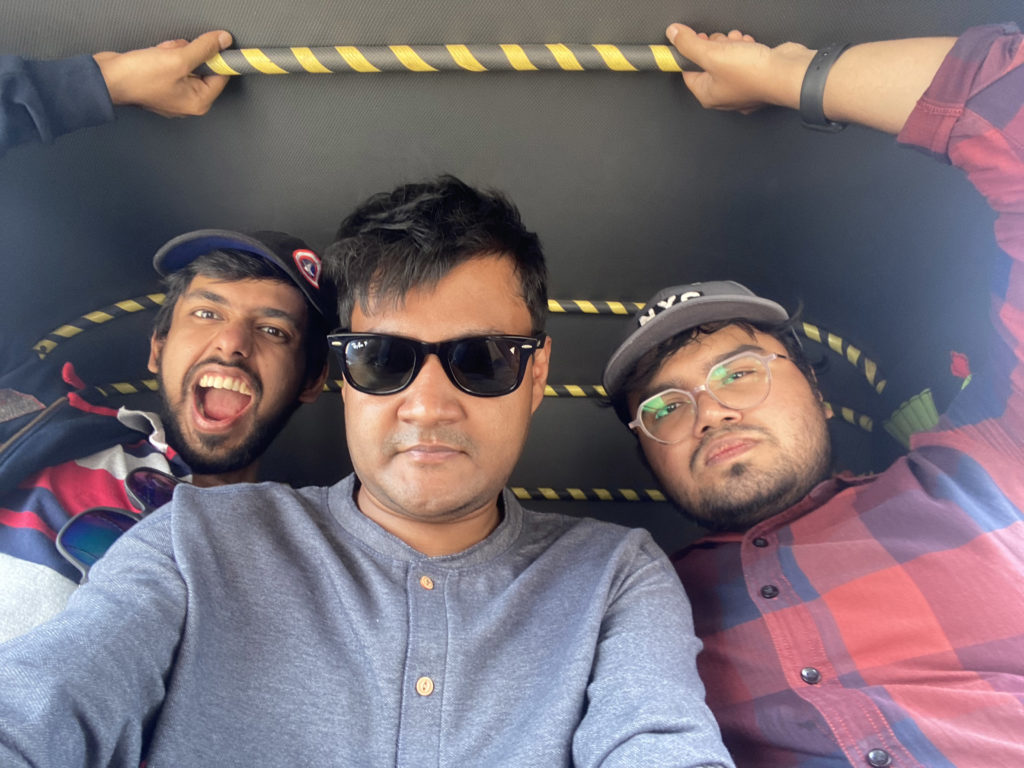
The auto takes a route 20 kilometer away to cross from one end to another.
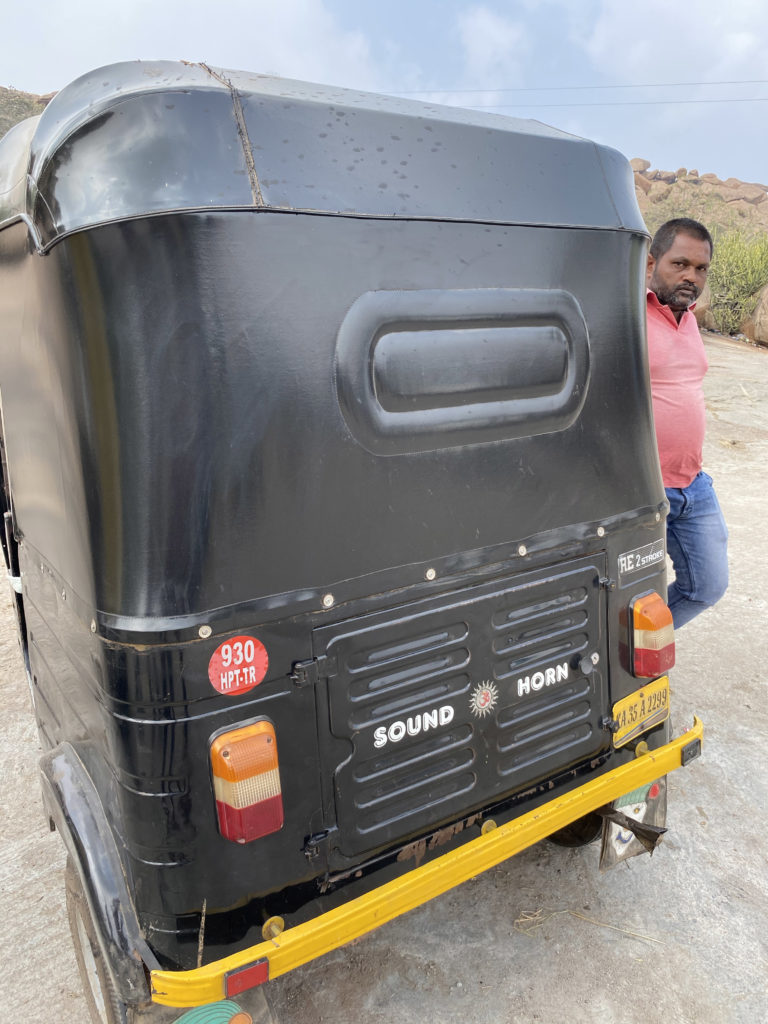
What did we witness?
Let’s explore the four facets of this famous place.
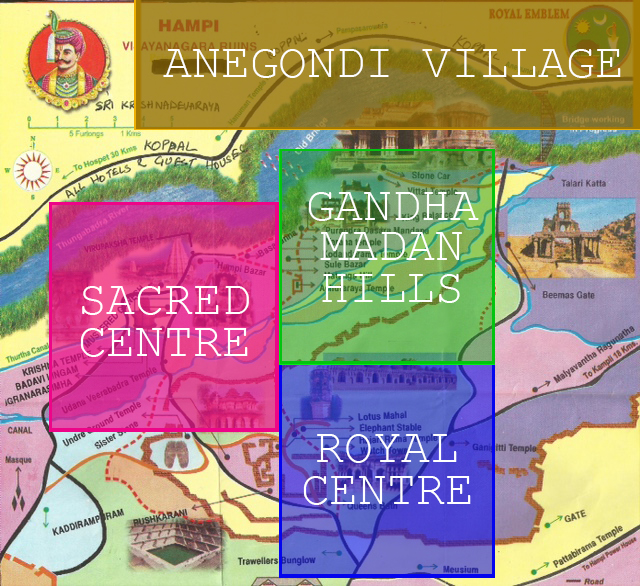
Hampi is mostly popular historically for its temple side to south of Tungabhadra, which has majority of the 1600 Monuments of prominent Dravidian architecture style. There are few Jain monuments and even fewer Muslim monuments.
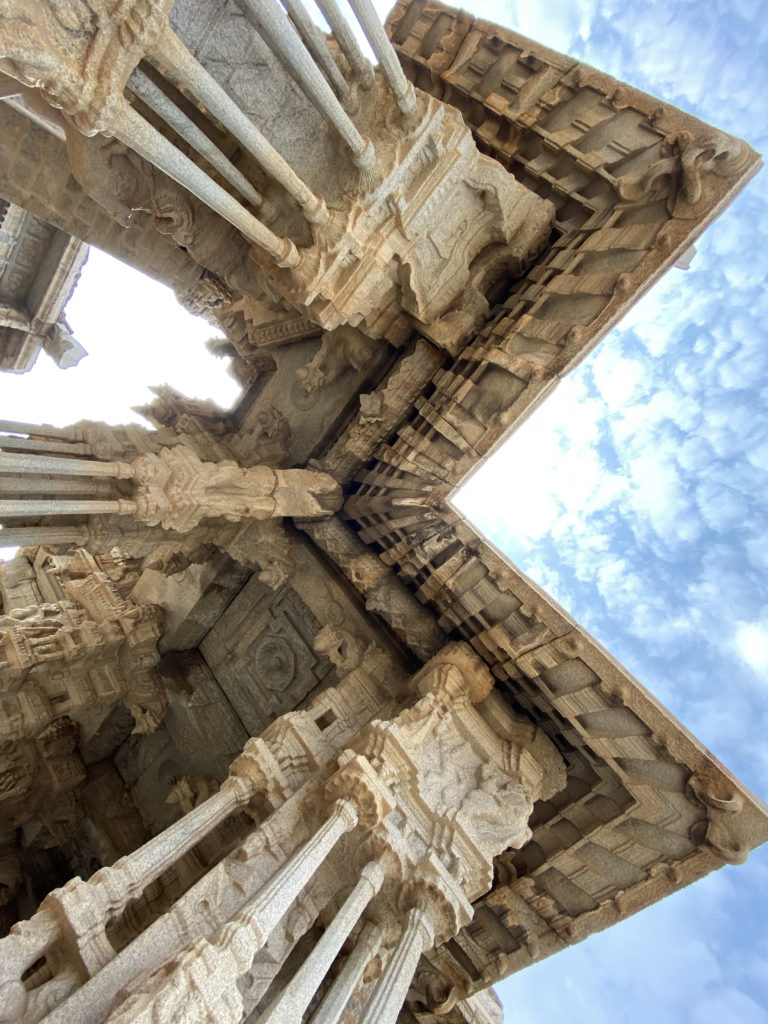
SACRED CENTRE
Virupaksha temple
The small shrine dedicated to Lord Shiva were expanded
in the late Chalukya and Hoysala periods. The current mammoth structure was attained during Vijayanagar period under emperor Deva Raya II.
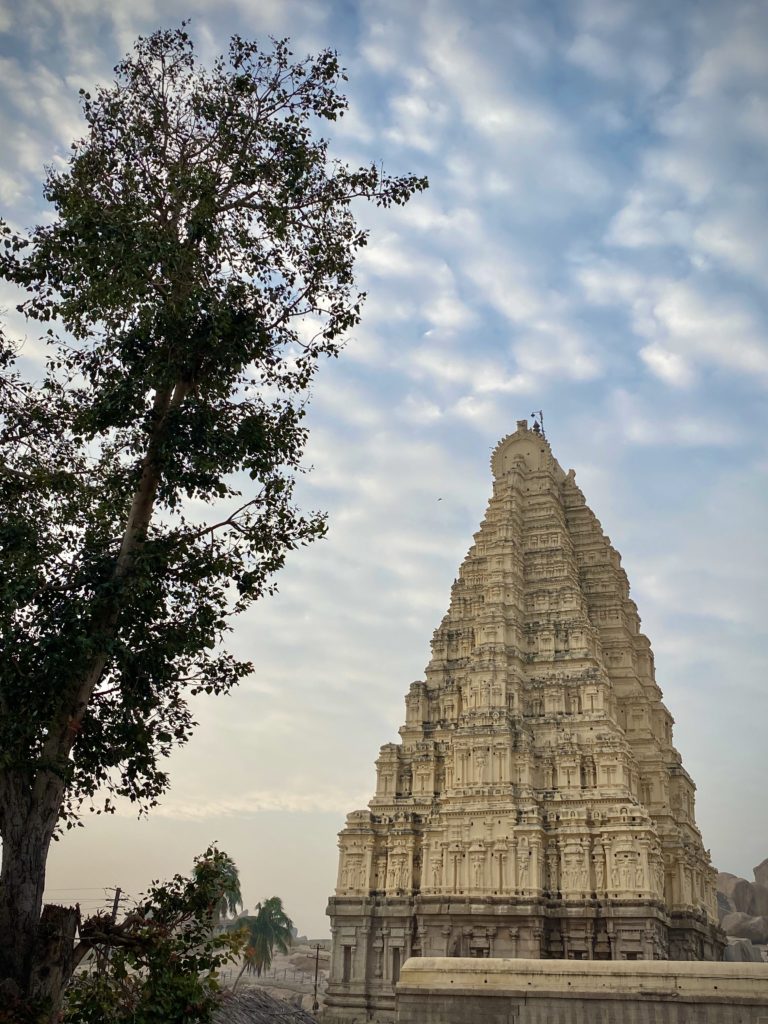
Hampi township was destroyed by Islamic invaders in 1565, Virupaksha temple had structures destroyed.. Till today, the temple sustained test of time being a religious focal point of Hinduism followers.
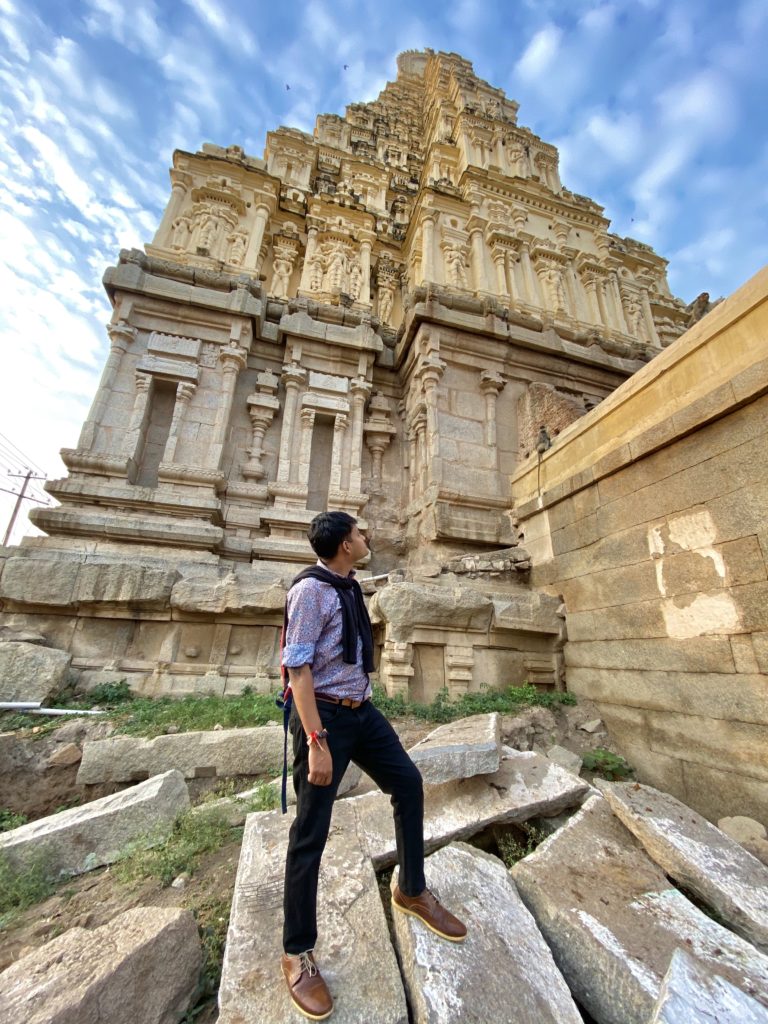
The ruler Krishnadevaraya was biggest patron of this temple. The temple elephant Lakshmi is taken through this back route for bath every morning.
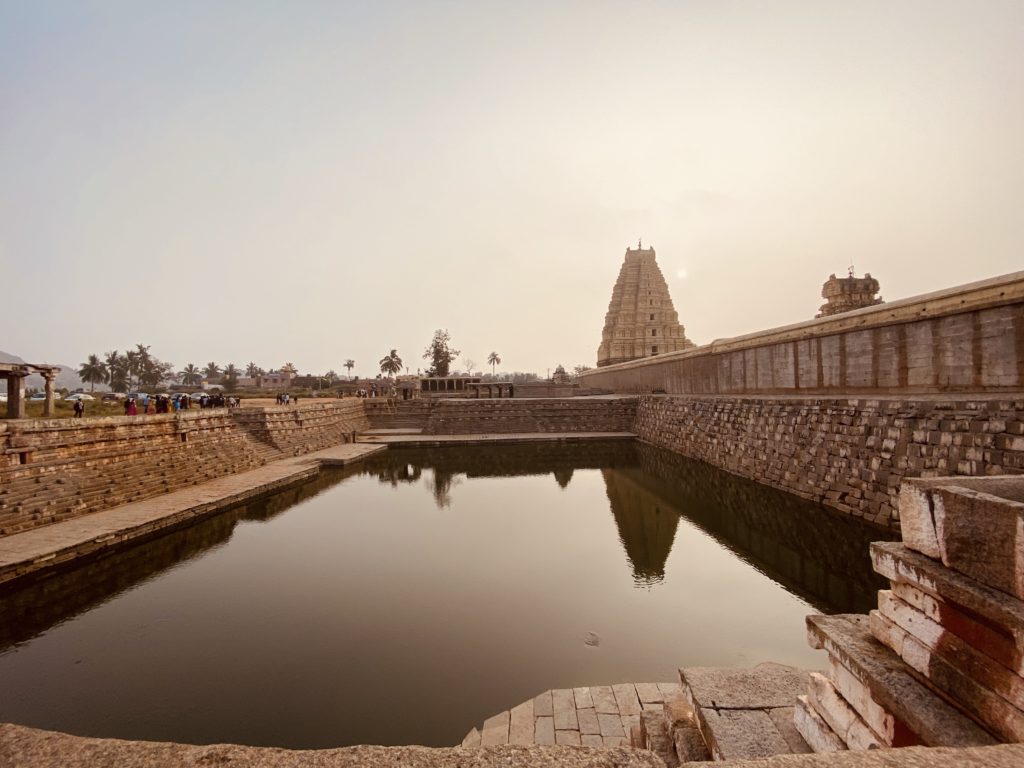
Have a look at how crazy it gets everyday when the elephant gets to his bath. The golden time is between 7.30 AM to 8.00 AM.
Kadalekalu Ganesha
The statue of Kadalekalu Ganesha is 5 feet tall and chiseled out of a single boulder. The belly of Ganesha has been carved to resembles a Bengal gram (Kadalekalu in Kannadiga).
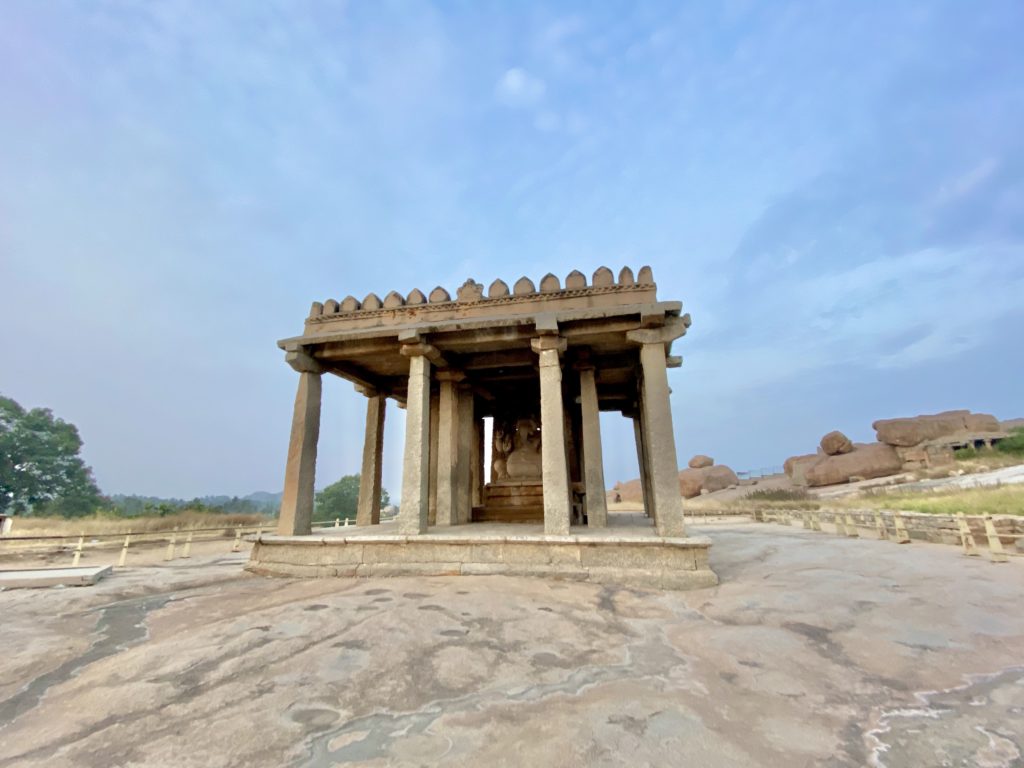
Hemakuta monuments
Jain temples dedicated to Lord Shiva with pyramid shaped roofs.

Krishna Temple and Complex
King Krishnadevaraya built the Krishna temple in 1513 A.D. to celebrate conquest of Udayagiri (in present Odisha).
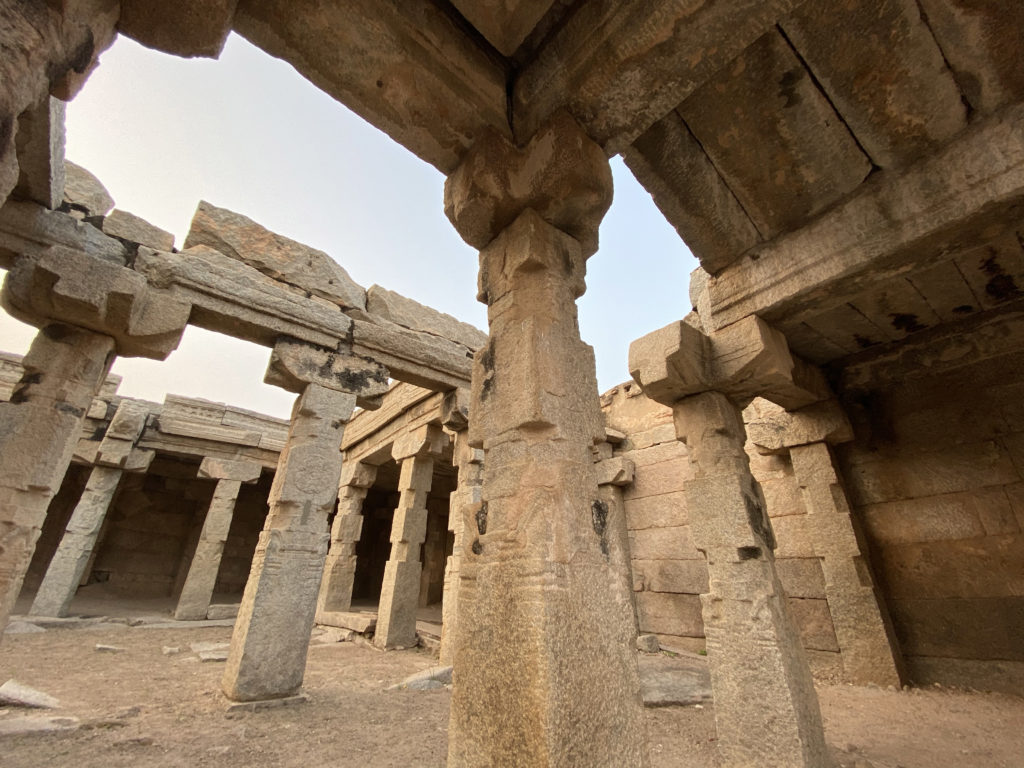
The central room houses infant Krishna. Krishna Complex in front of the temple used to be a prime site for market in the ancient times.
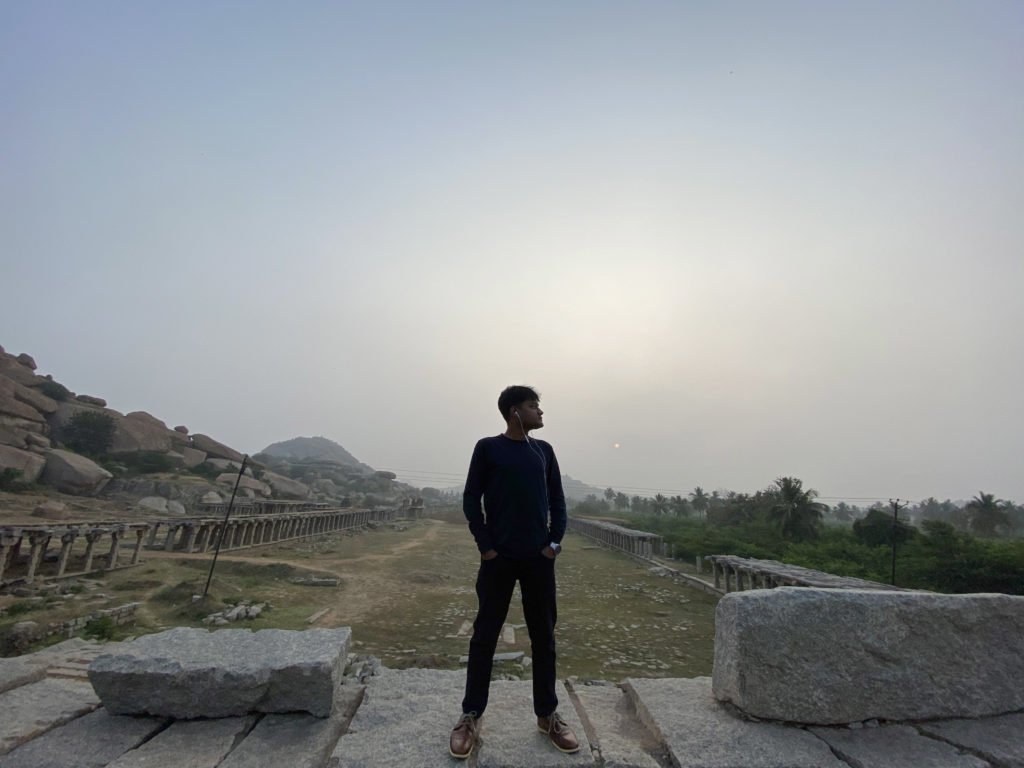
Narasimha Idol
The avatar of Vishnu was built in 1528 A.D. The original Lakshmi statue accompanying Narasimha no longer exists.
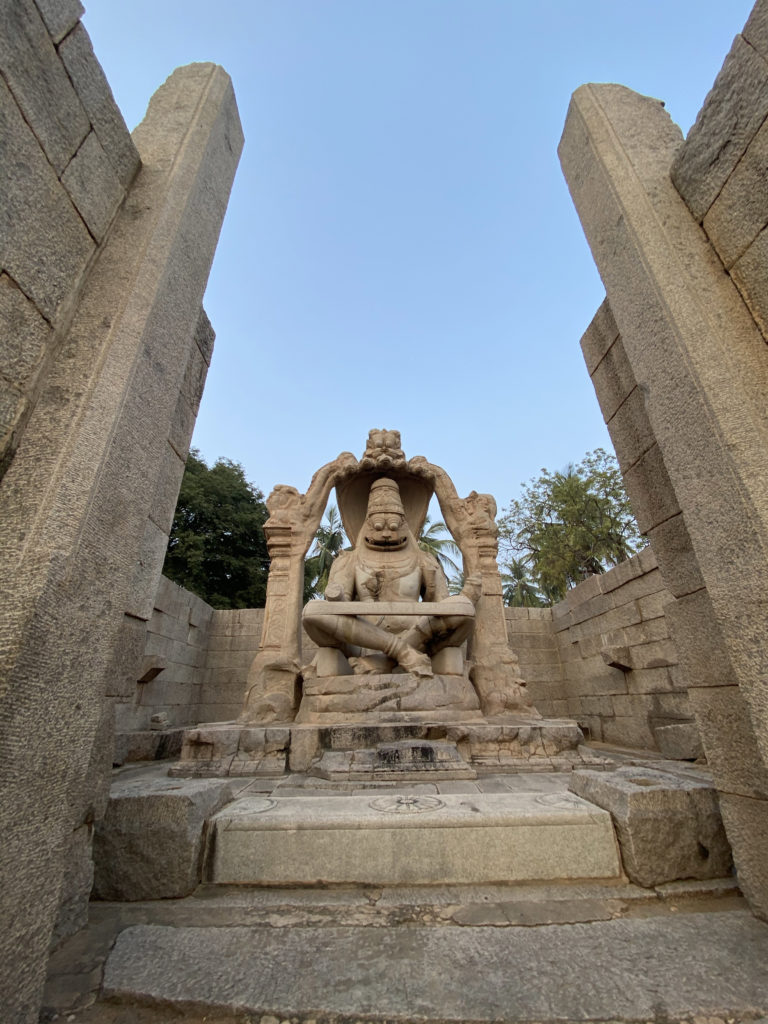
Hampi Bazaar
Virupaksha bazaar ruins stretch for one kilometer in front of temple.
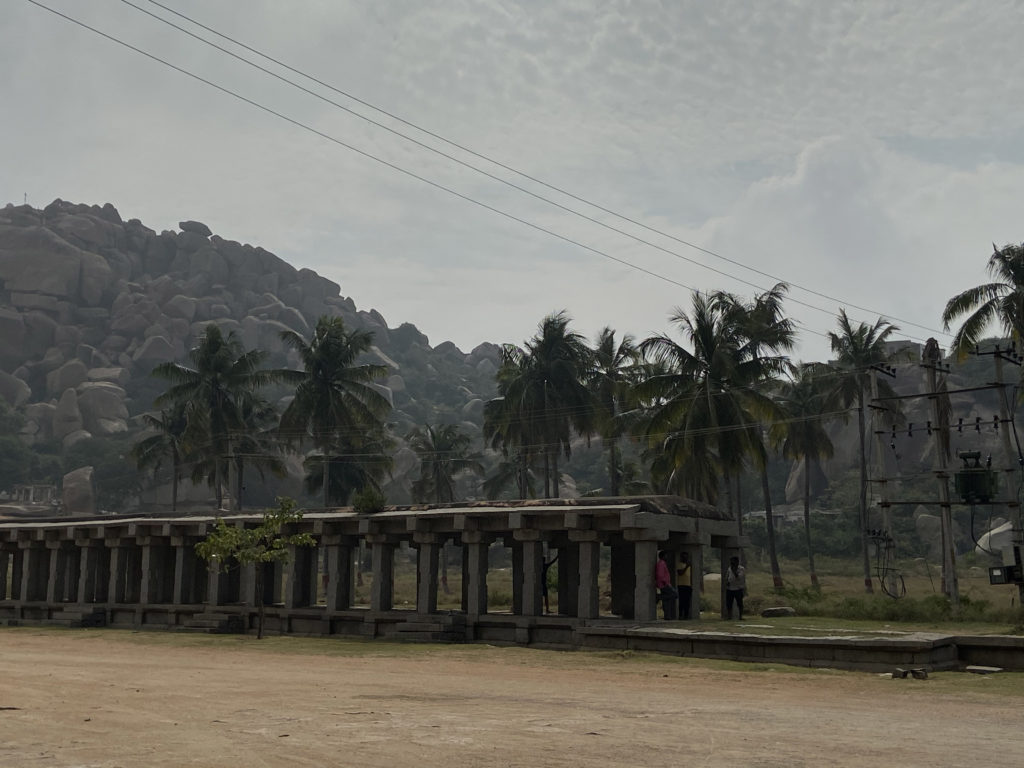
ROYAL CENTRE
Queen’s palace
Zenena enclosure was private enclosure of 46 x 29 meters dimensions which used to be private place for royal women, whose basement survives.
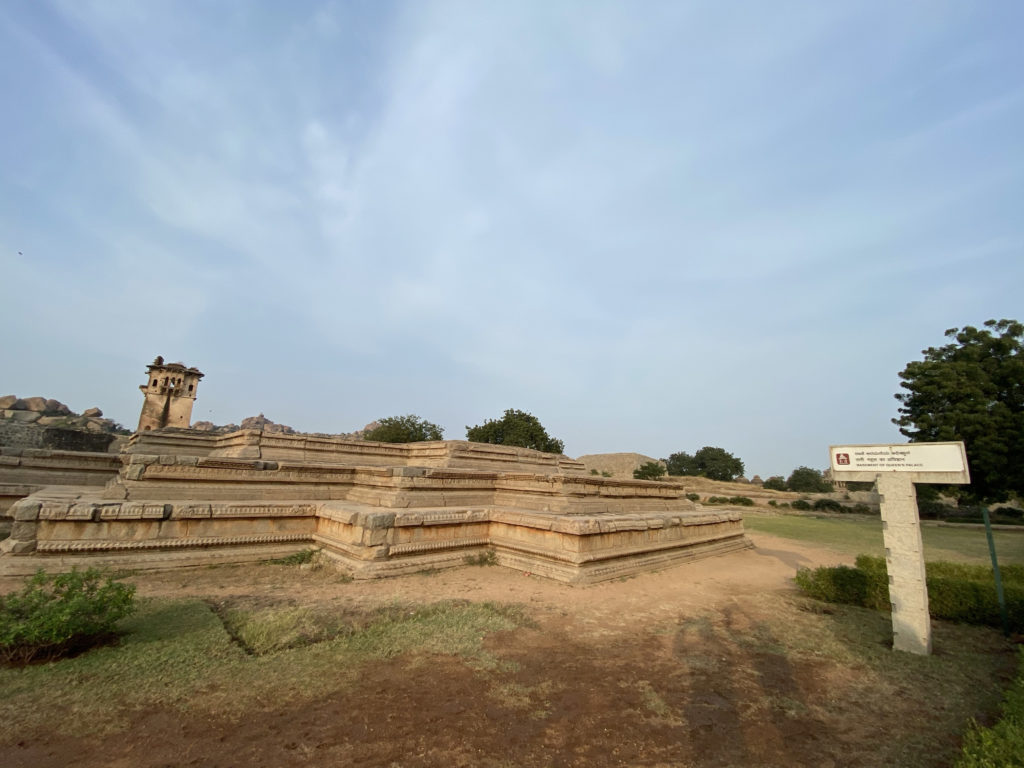
Lotus Mahal
The Lotus Mahal as the central attraction was used as a council room for the chief commanders.
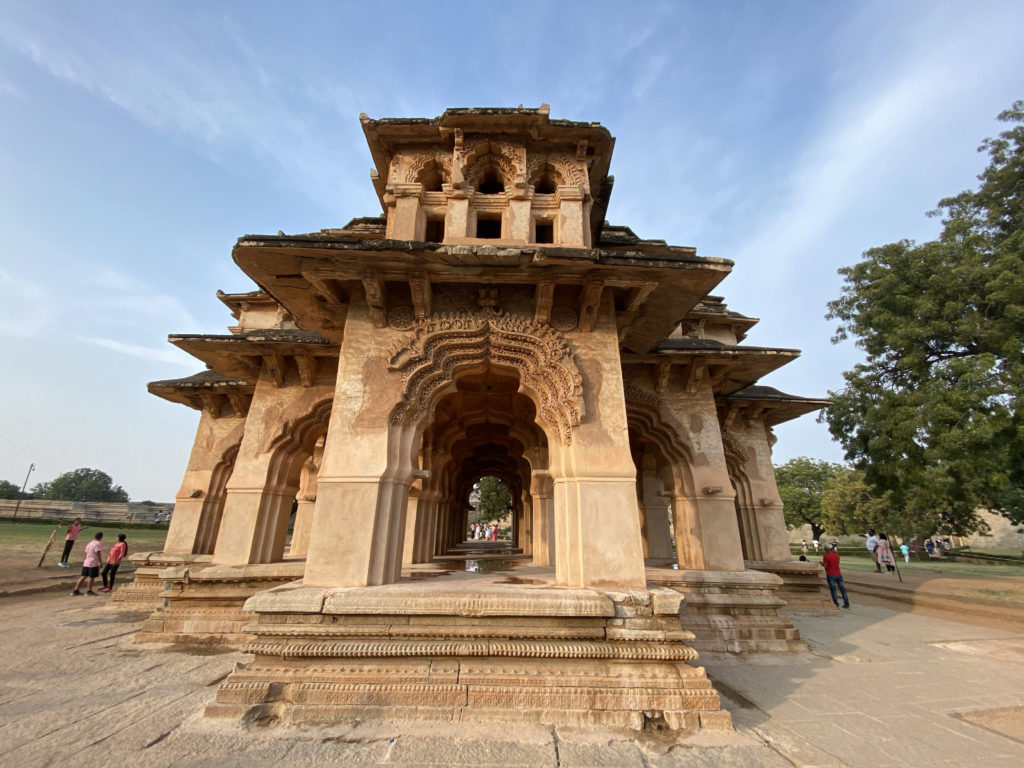
Ranga Temple is situated on the east side of Lotus mahal and is primarily inaccessible to public due to ongoing renovation work.
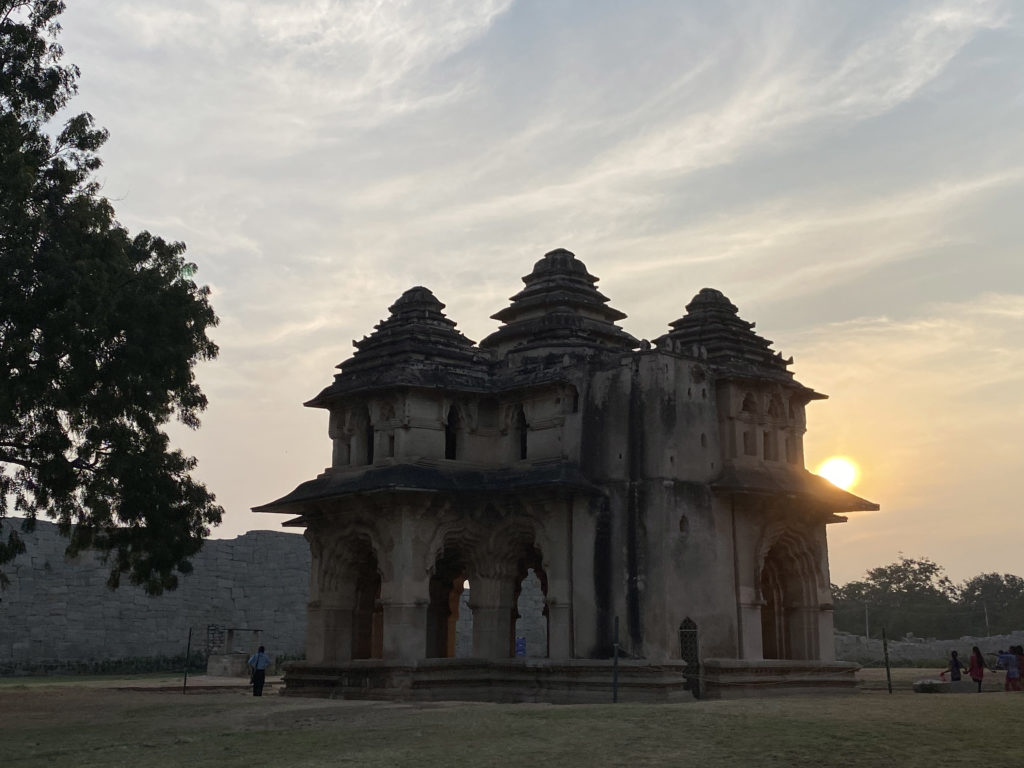
Elephant stable
The 11 chambers for elephant stable is a mammoth granite beauty. Metal hooks (to tie the elephants) is visible inside. The small orifices in rear was used by the mahouts to enter the compartments.
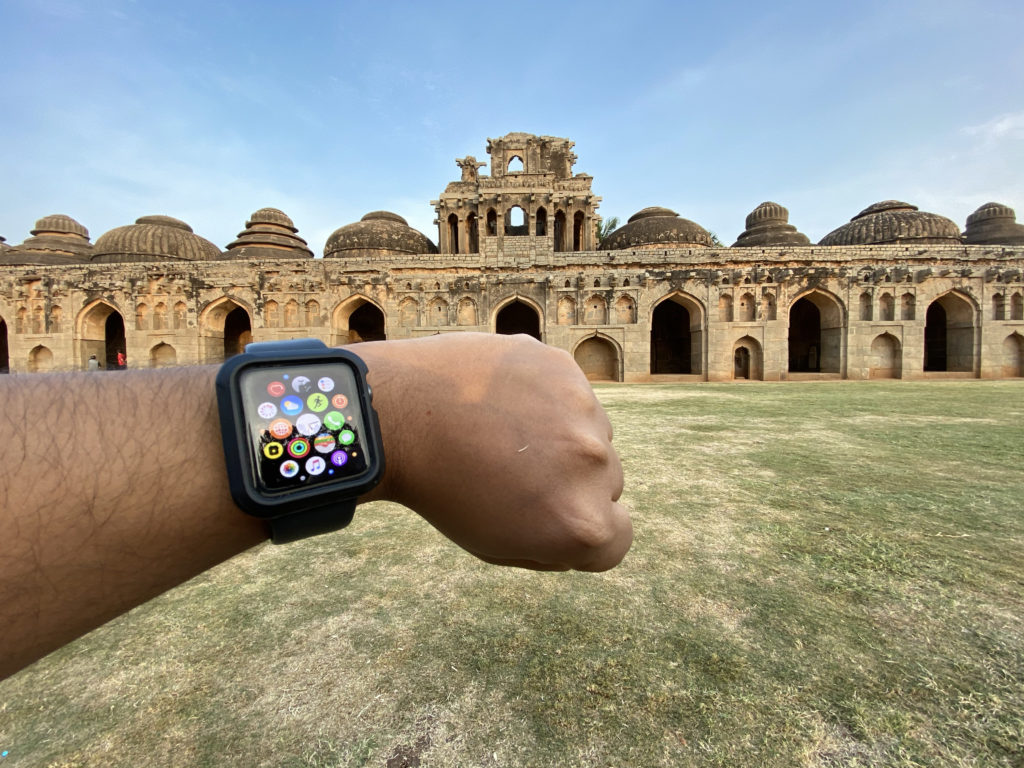
Underground Shiva temple
Dedicated to Prasanna Virupaksha, an avatar of Lord Shiva, the temple was unearthed in 1980’s. Nobody really knows why this was built in such a fashion.
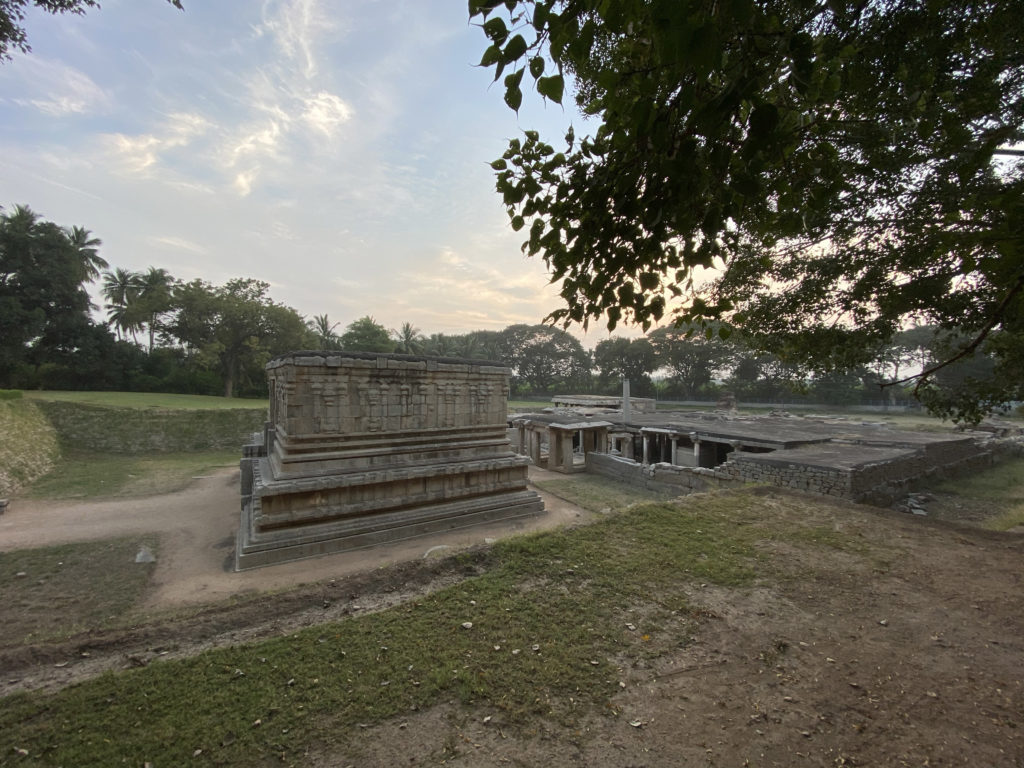
Nobleman’s quarters
The foundation of the complex where aristocrats resided. Evidences of water channels and golden jewellery have added to historical reinforcement of the fact.
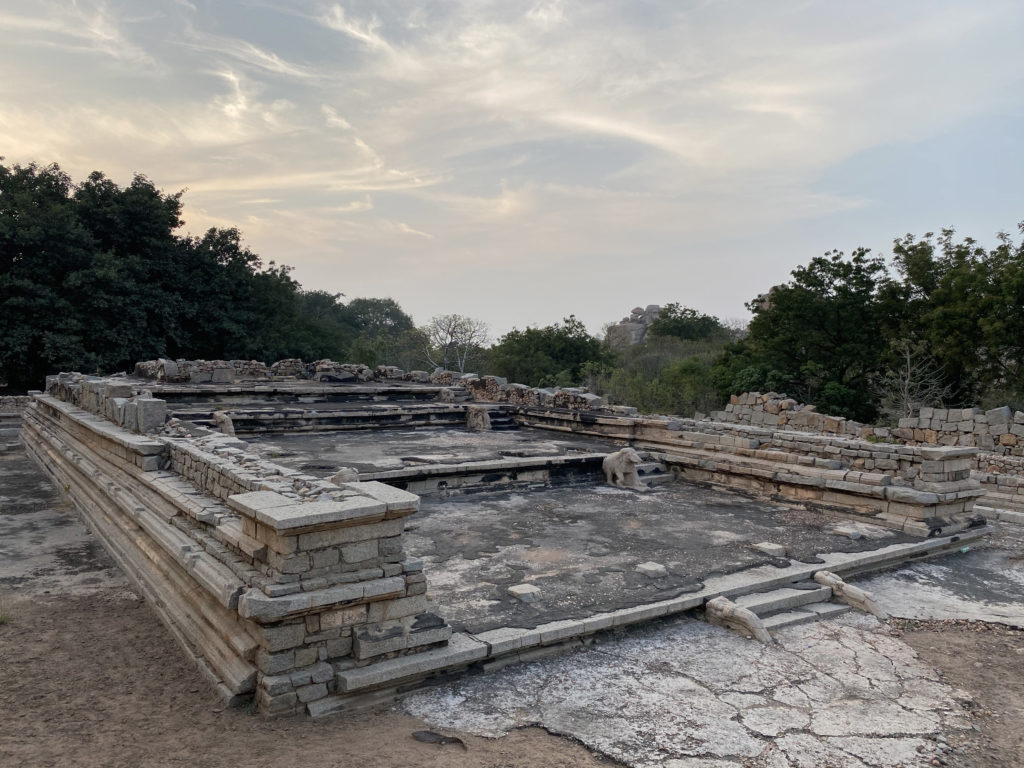
Muhammadan watch tower
Believed to be built by Ahmad Khan, military officer under King Devaraya II in 1439, the watch tower is rare Islamic prayer hotspot in Hampi.
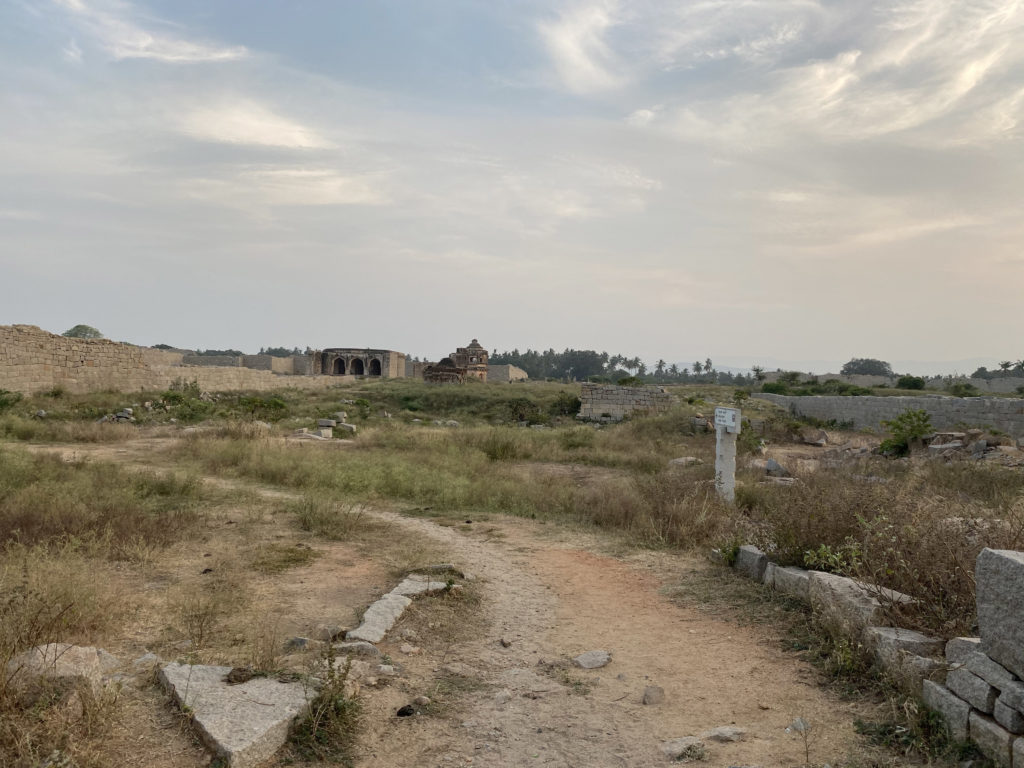
Hazara Rama temple
King Devaraya I erected this temple with three distinct sections in 1446 A.D., dedicating to the ideal governance of Lord Rama. The open pillar section is mahamandapa, the middle ardhamandapa, the rear gribhgriha are three sections of this temple enclosed by 24 feet wall.
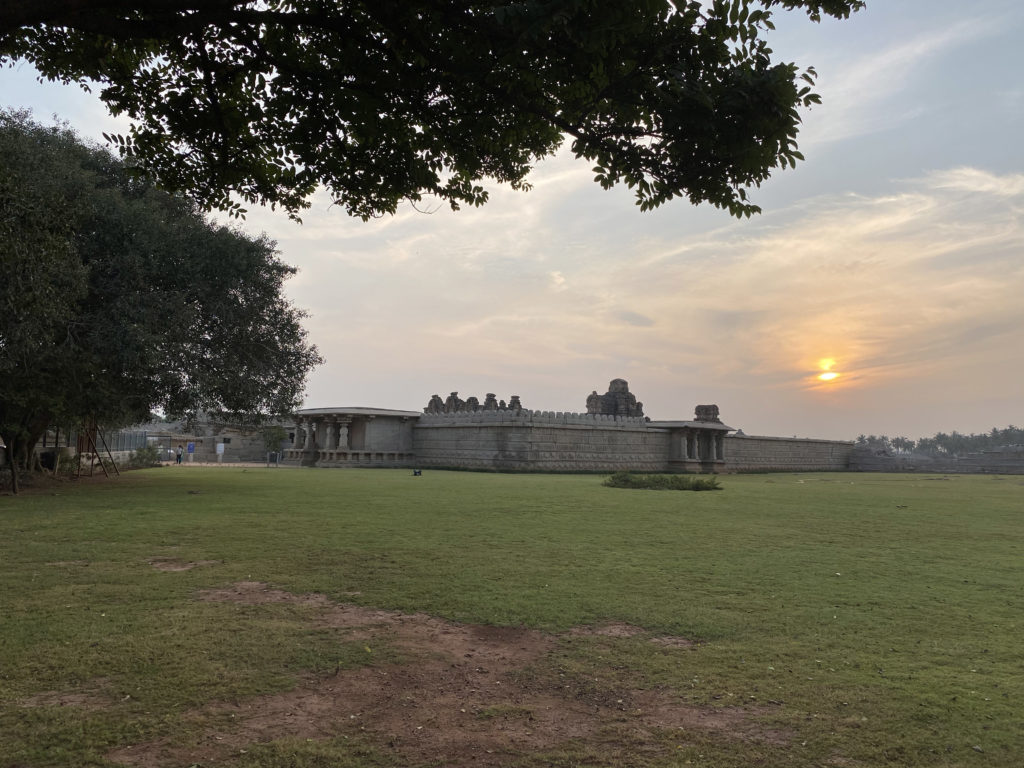
Goddess Pampa was considered as consort of Lord Shiva, who had blessed Devaray I to build this temple and the story of the same is inscribed across the temple. The carvings depict story of Ramayana in hunderd and eight panels and ends in Lava-Kusha episodes.
Queen’s bath
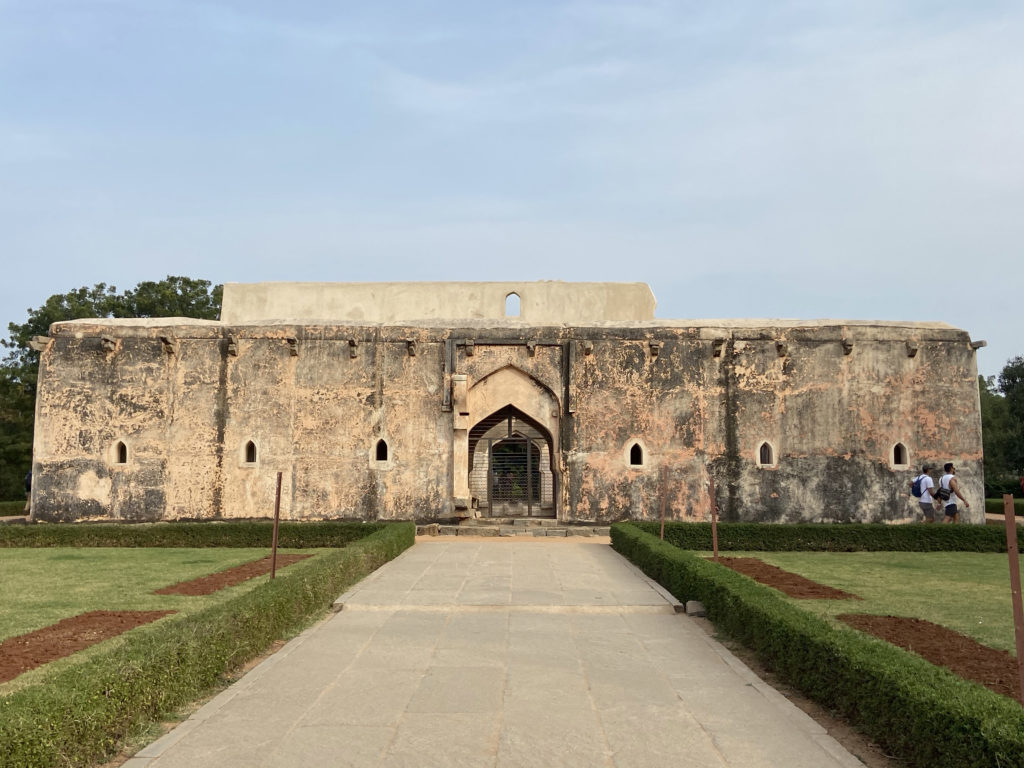
1.8 meter deep trenches surrounding Queen’s bath was built by Achyutaraya and believed to the centre of water sports.
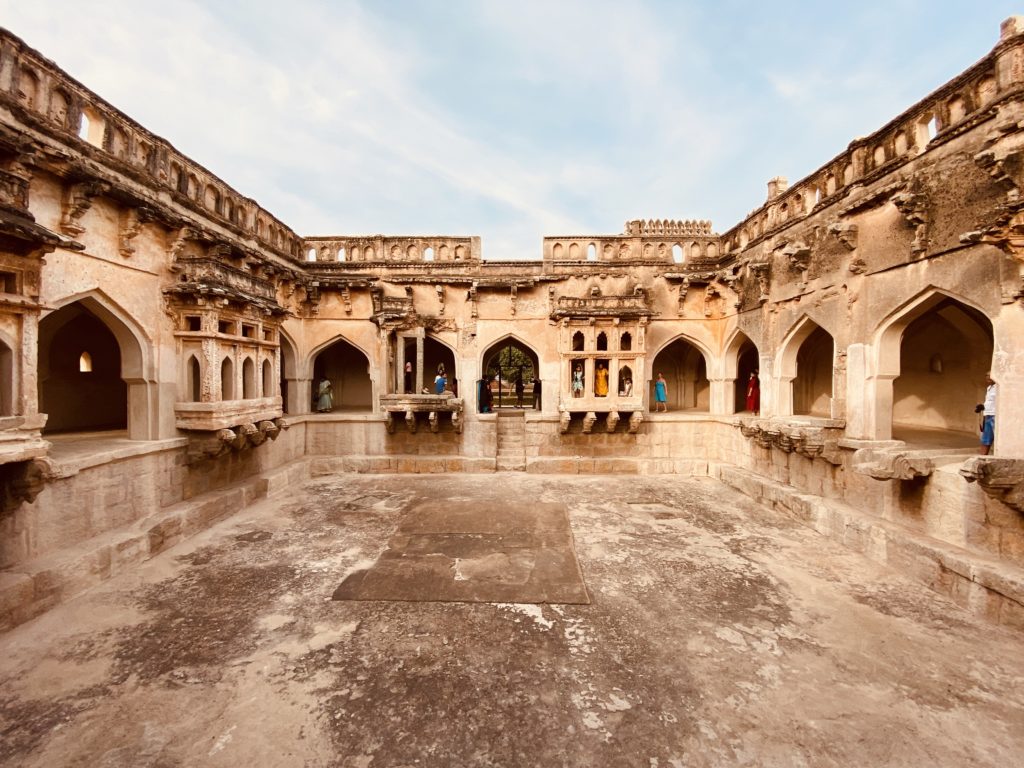
Few other structures in this zone which we could not cover due to shortage of time. Absolutely drop by them for the love of exploration-
- Tenali Rama Pavillion
- Archeological gallery
- Octagonal bath
- Bhima’s Gate
Malyavanta Raghunatha Temple
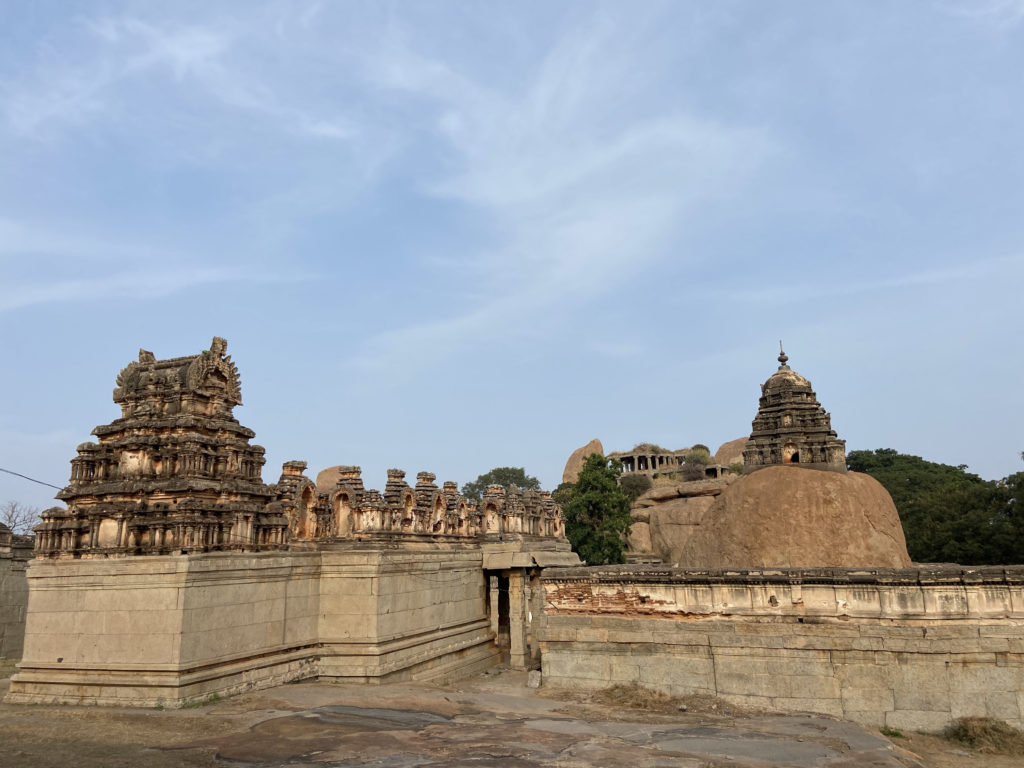
Lord Rama, his brother Lord Lakshmana and Hanuman army were said to take shelter here during monsoon before embarking on journey to Lanka.
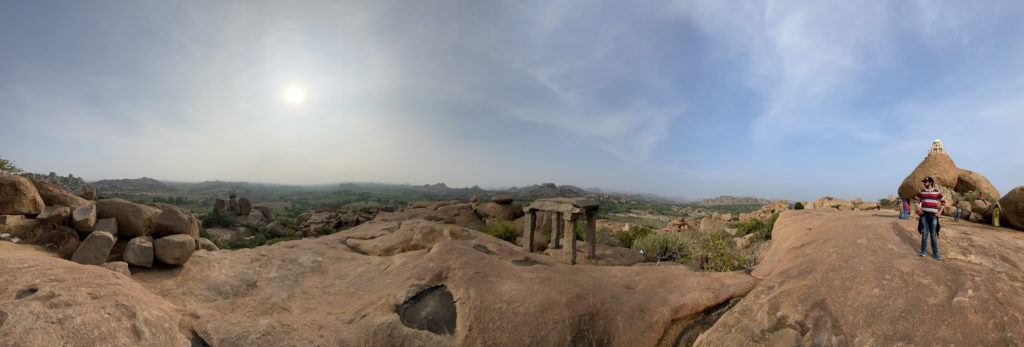
The climb through the temple takes to Shiva Cave temple atop large boulder and providing amazing scenic view.
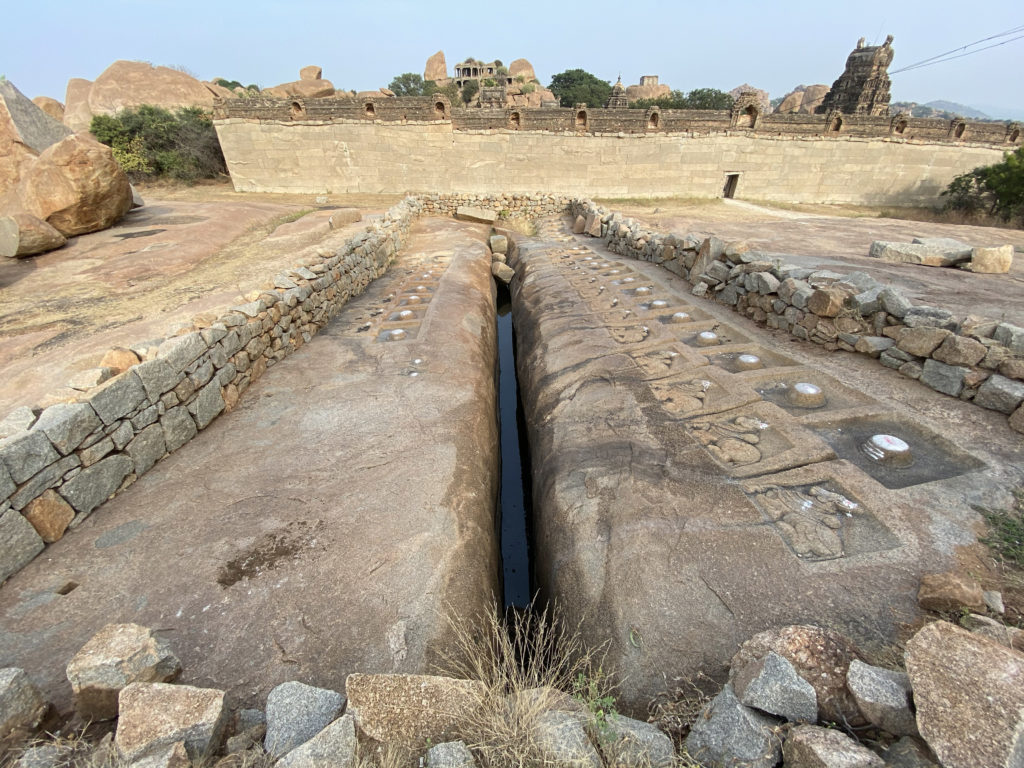
GANDHAMADAN HILLS
Vijaya Vittala temple
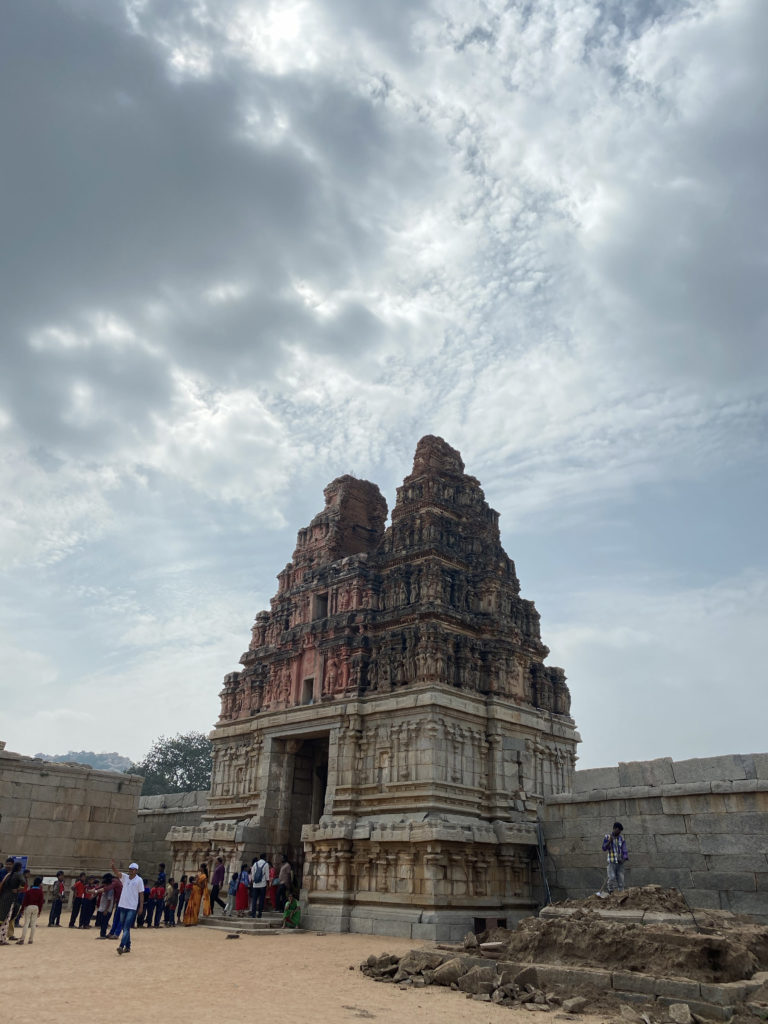
Rani Chinnadevi and Rani Tirumaladevi constructed the temple in 1513 A.D. Both were wives of King Krishnadevaraya, who was described as following by Dominigo Paes, a Portuguese traveller-
Krishandevaraya is of medium height, and of fair complexion. He has a good figure, though rather fat than thin. On his face he has signs of small-pox. He is most feared and a perfect king. He honors foreigners and receives them kindly, asking about all their affairs, whatever their condition might be. He is a great ruler and a man of much justice, but subject to sudden fits of rages.
https://madrascourier.com/insight/a-portuguese-account-of-krishnadevaraya-his-kingdom/
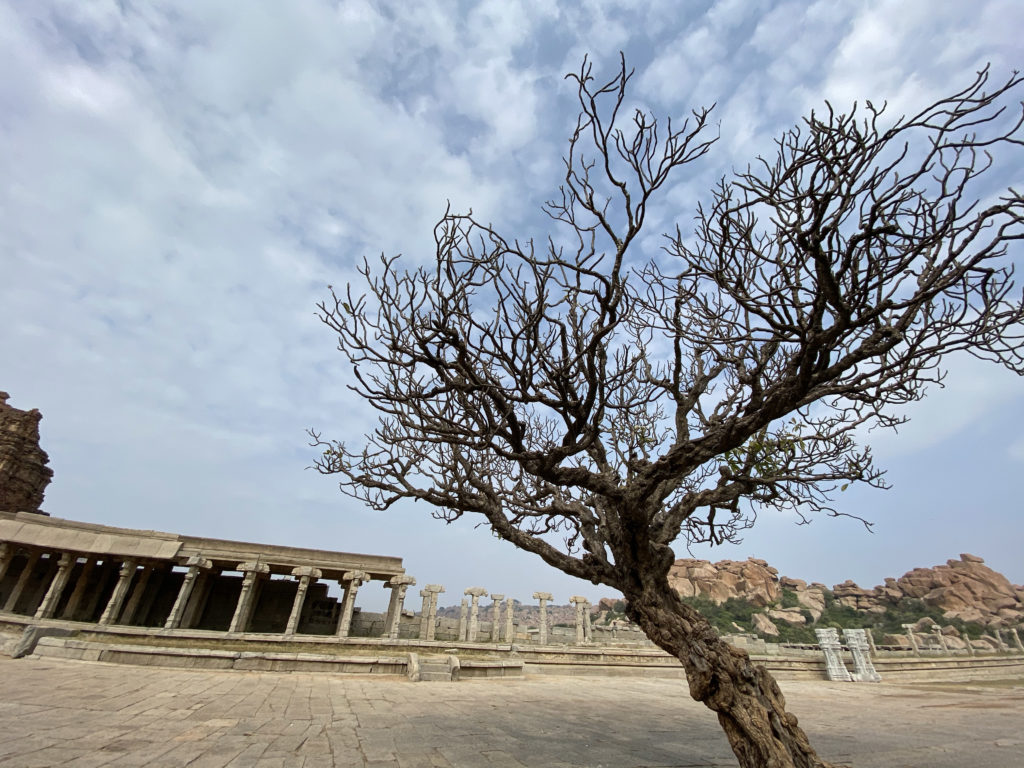
Traders and merchants of times past used to be regulars at the Vittala temple bazaar that stretches over one kilometer.
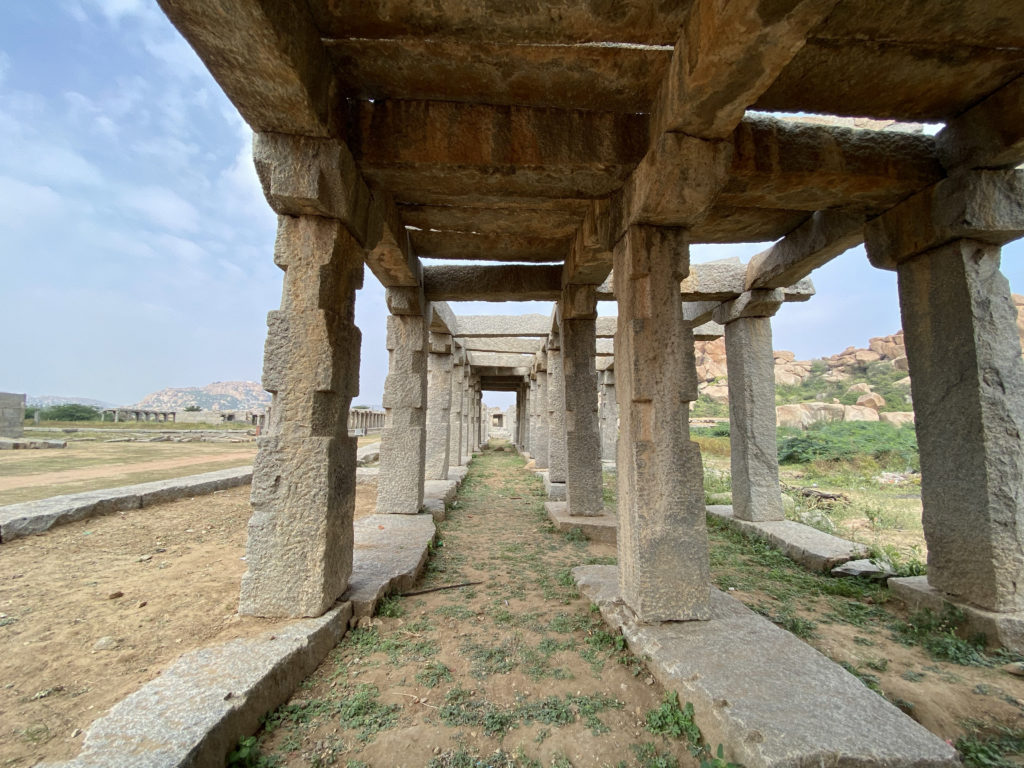
Shree Varaha swami Temple
Varaha, the mythical boar, was the third incarnation of Lord Vishnu. The walls have images and bas-relics of boars sculpted into them.
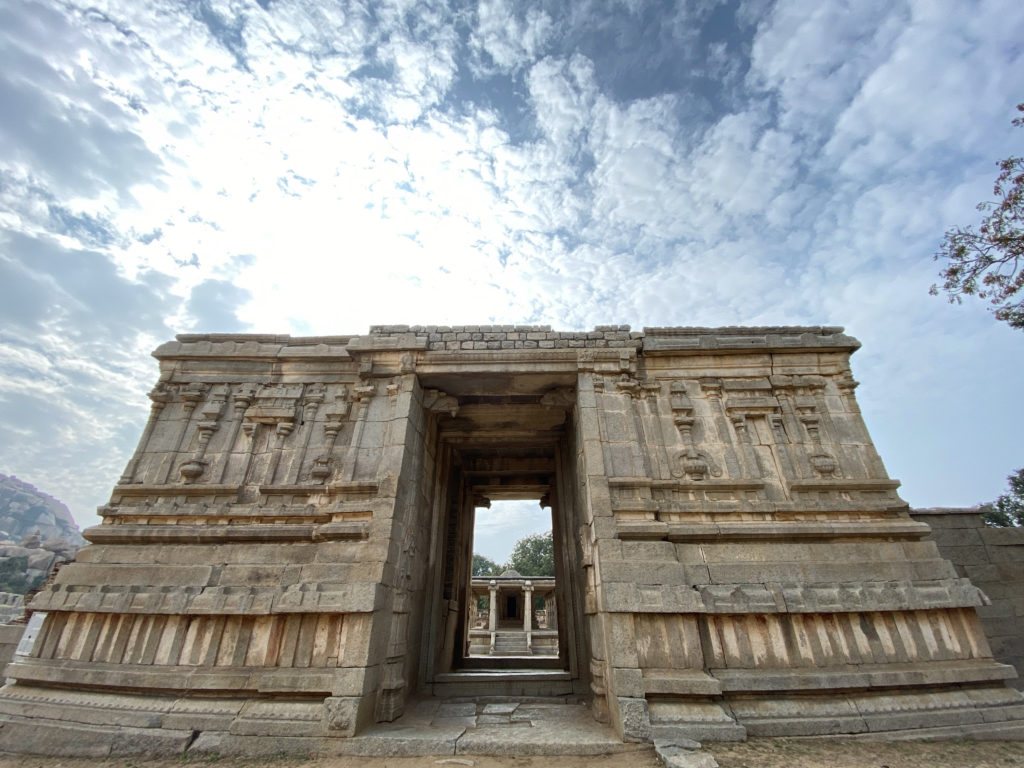
Sugreeva’s caves are near the Varaha temple where village animals graze.
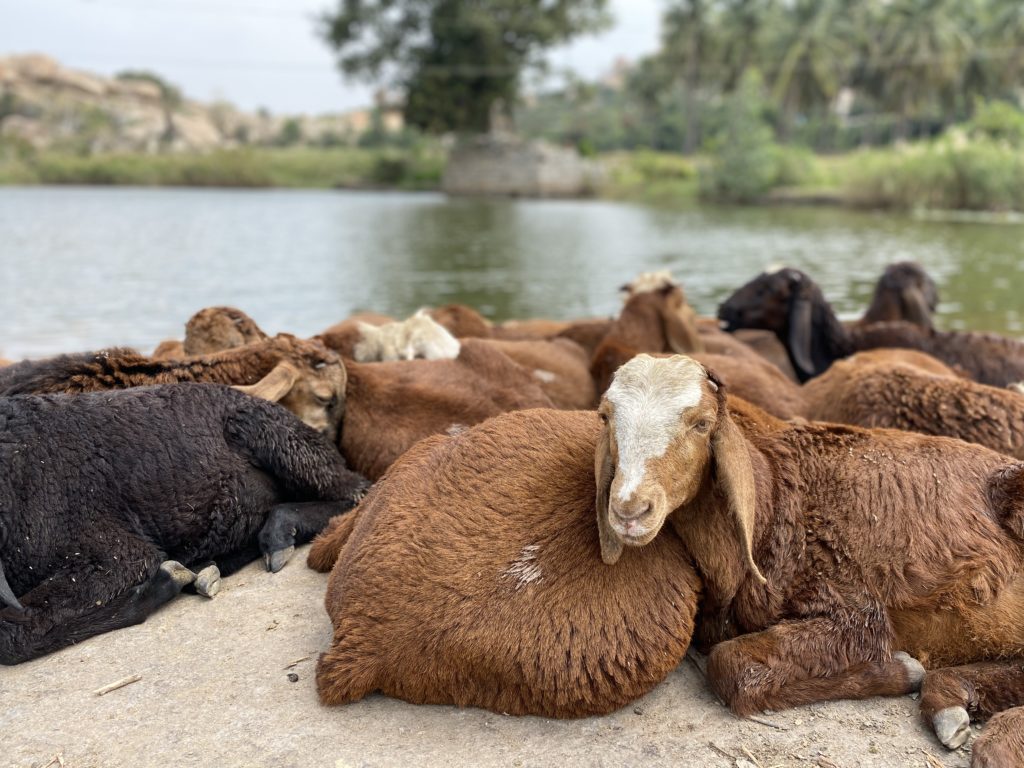
Sacred banyan tree
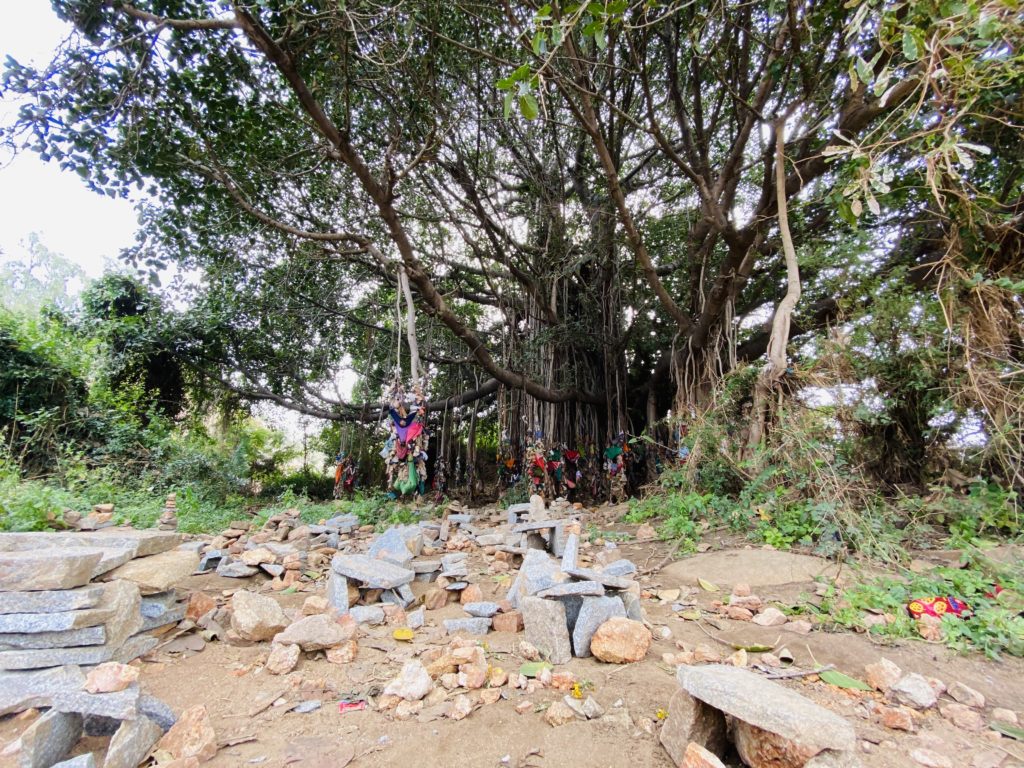
Vat Vriksha has good charms tied to the branches for pilgrims passing by.
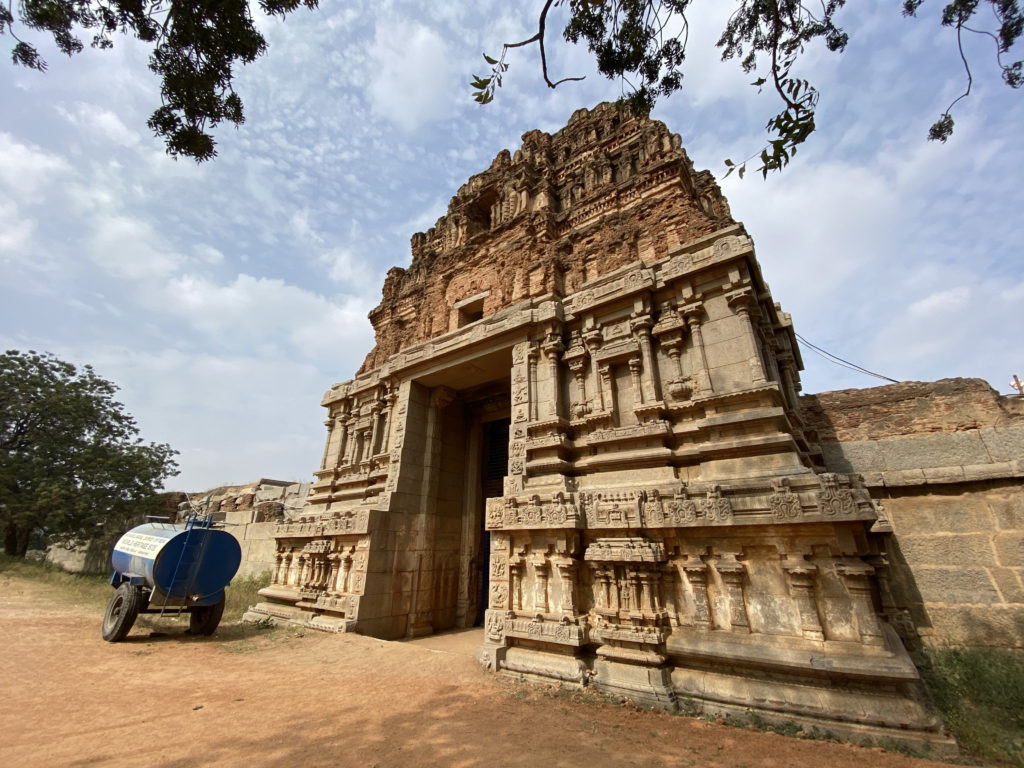
Ranganatha temple
The temple structure is dedicated to Lord Vishnu.
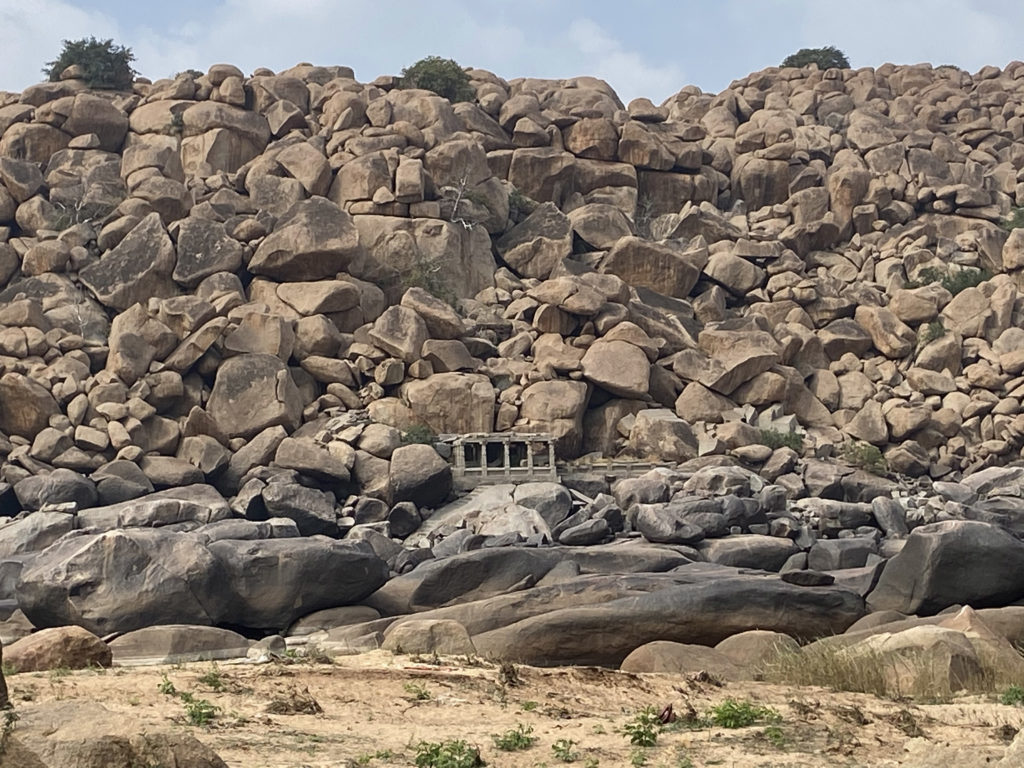
Closing in this section with me jumping across stairs of Narasimha temple.
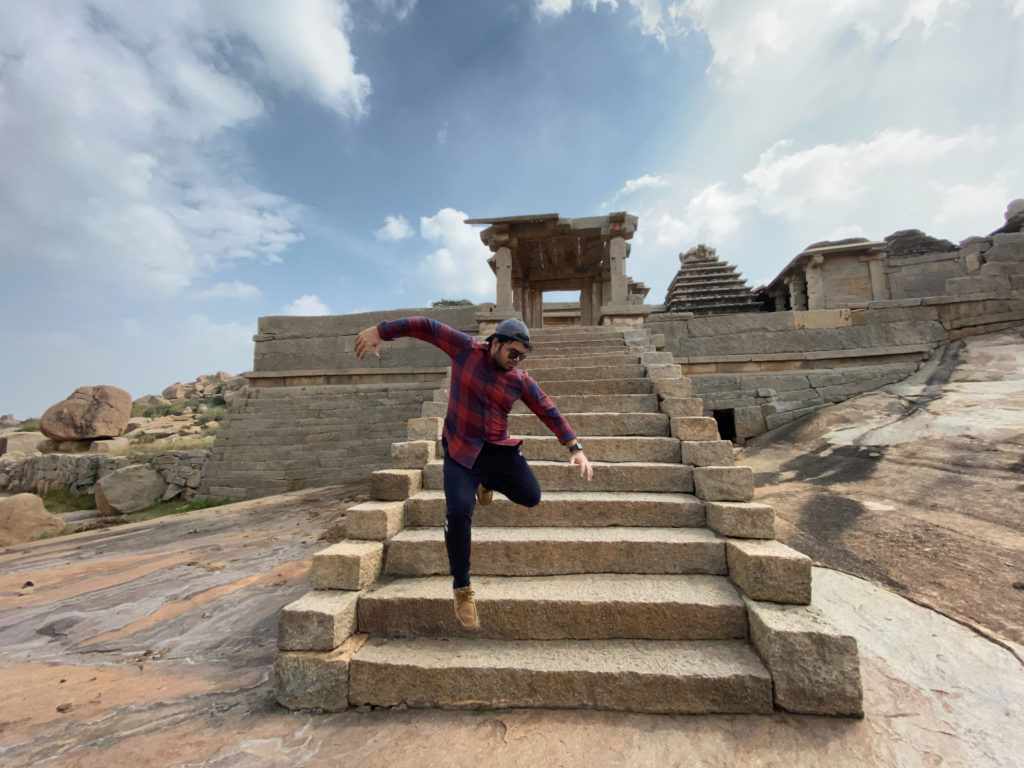
Then comes the other side of Hampi, bang opposite to the Tungabhadra river. Housing few prominent temples on the other side, this area is a lot greener and easily accessible crossing the Tungabhadra on a quick coracle ride.
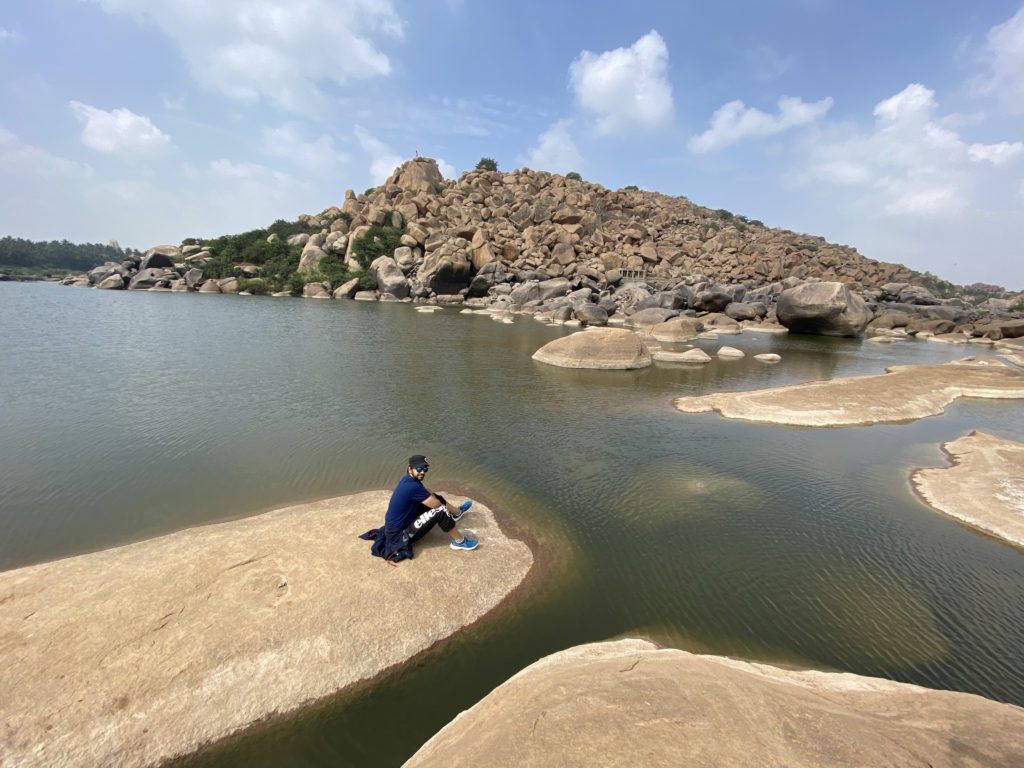
ANEGONDI VILLAGE
Anegundi (or Anegondi), previously called Kishkindha, is a village older than Hampi and situated on the northern bank of Tungabhadra River
Shri Ranganatha Swami temple
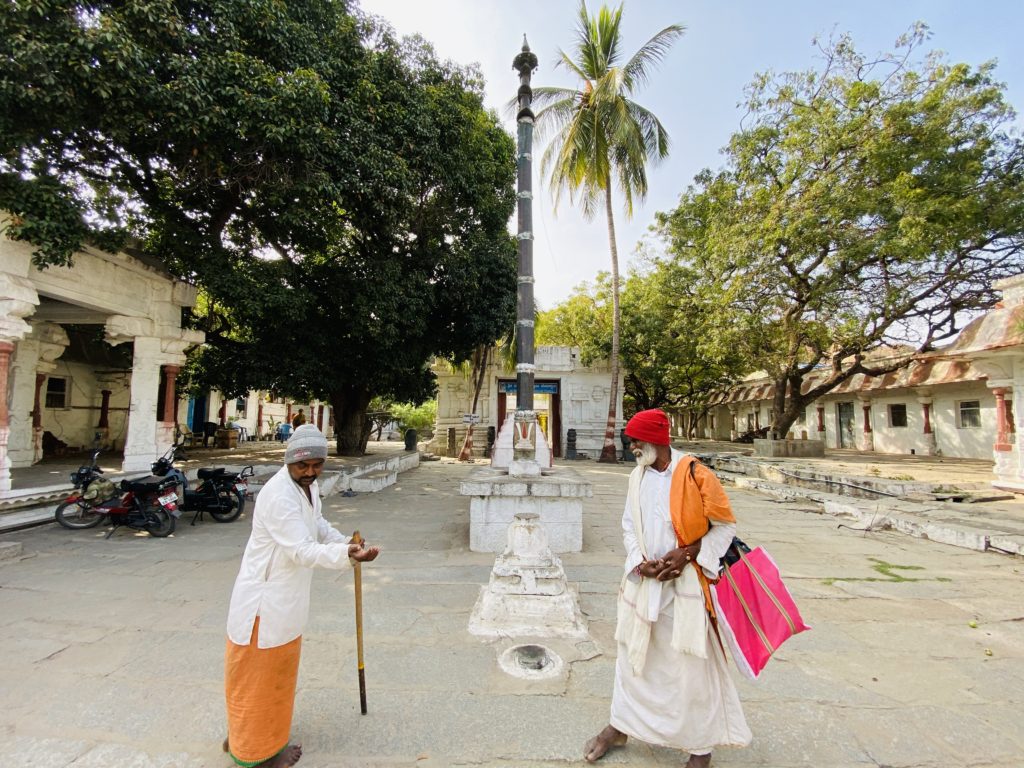
Pampa Sarovar
Pampa Sarovar is religiously important because Pampa, an incarnation of Shiva’s consort Parvati, performed penance to show her Shaivik devotion.
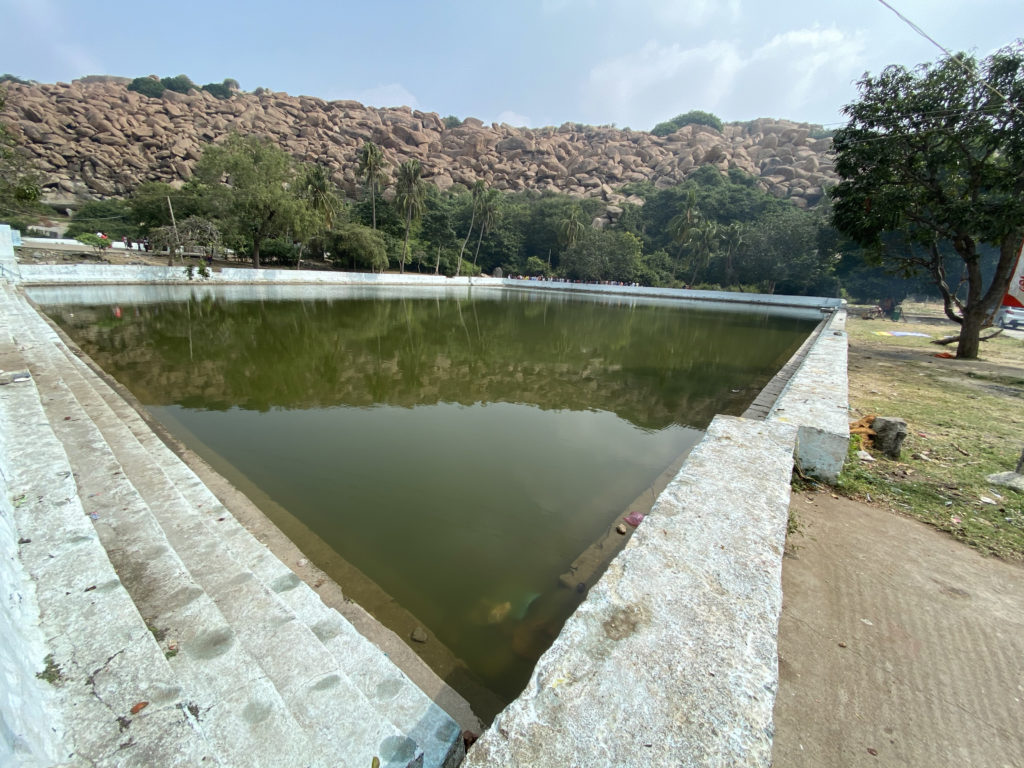
Bhagavata Purana mentions five sacred lakes – Mansarovar, Bindu Sarovar, Narayan Sarovar, Pampa Sarovar and Pushkar Sarovar. The Pampa Sarovar is a sight to behold!
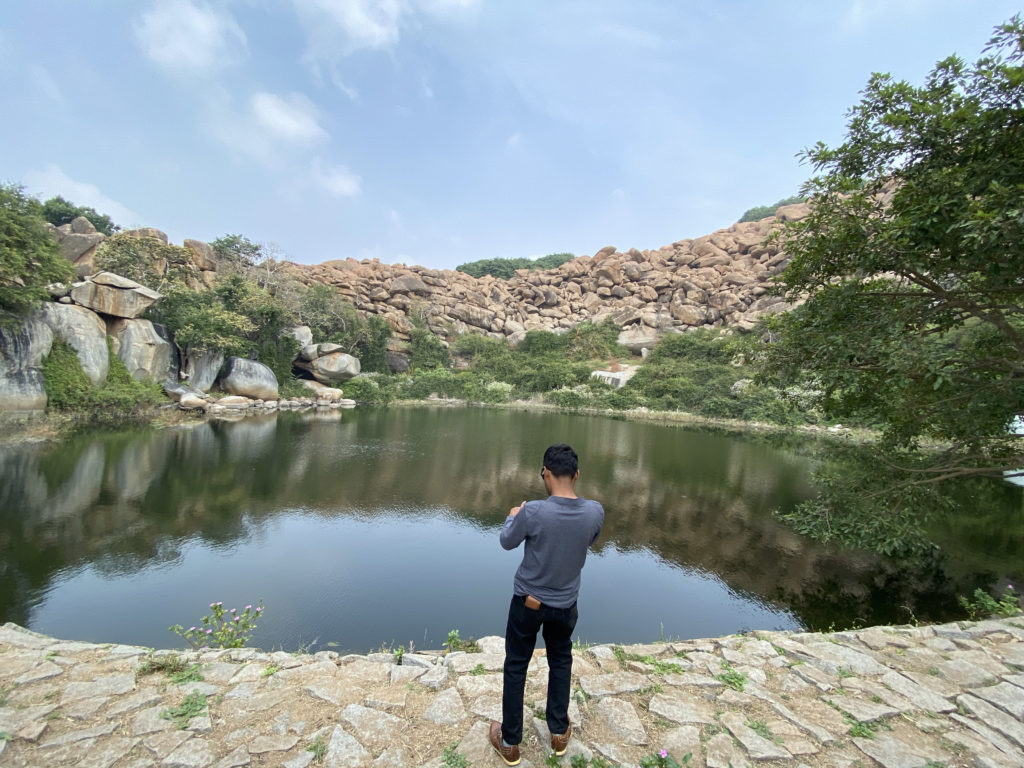
Sanapur lake
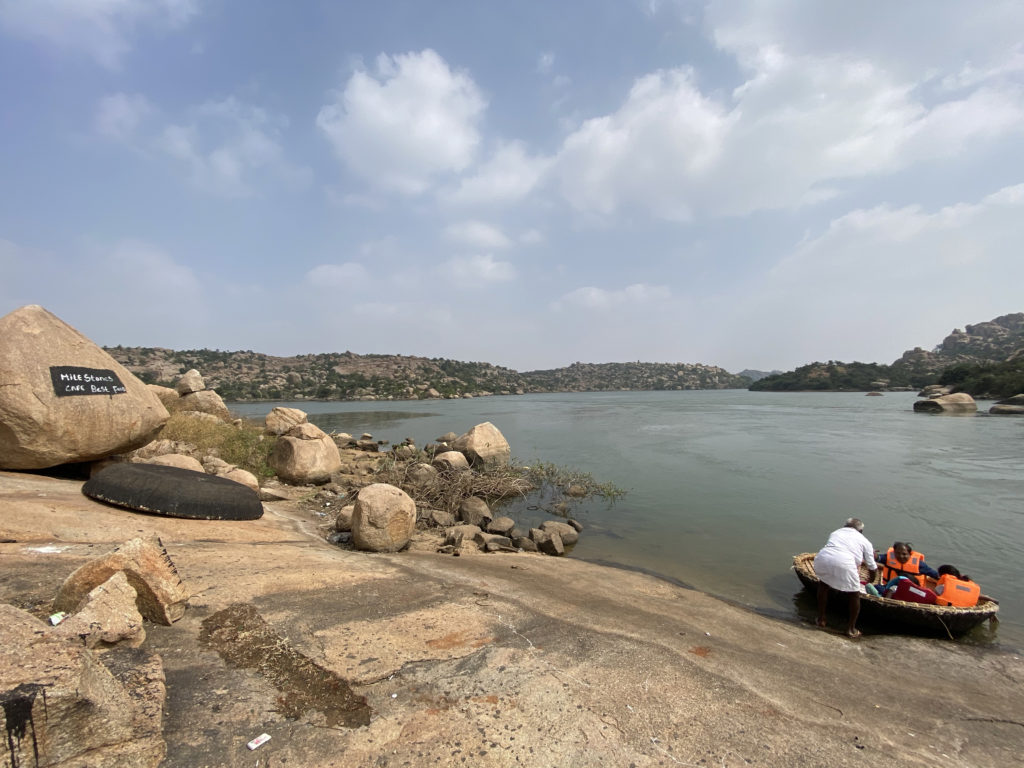
The irrigation reservoir dam is popular with tourists for coracle rides and calming waters.
Have a look at the video below how chill the vibes are.
Anjanadri Hill
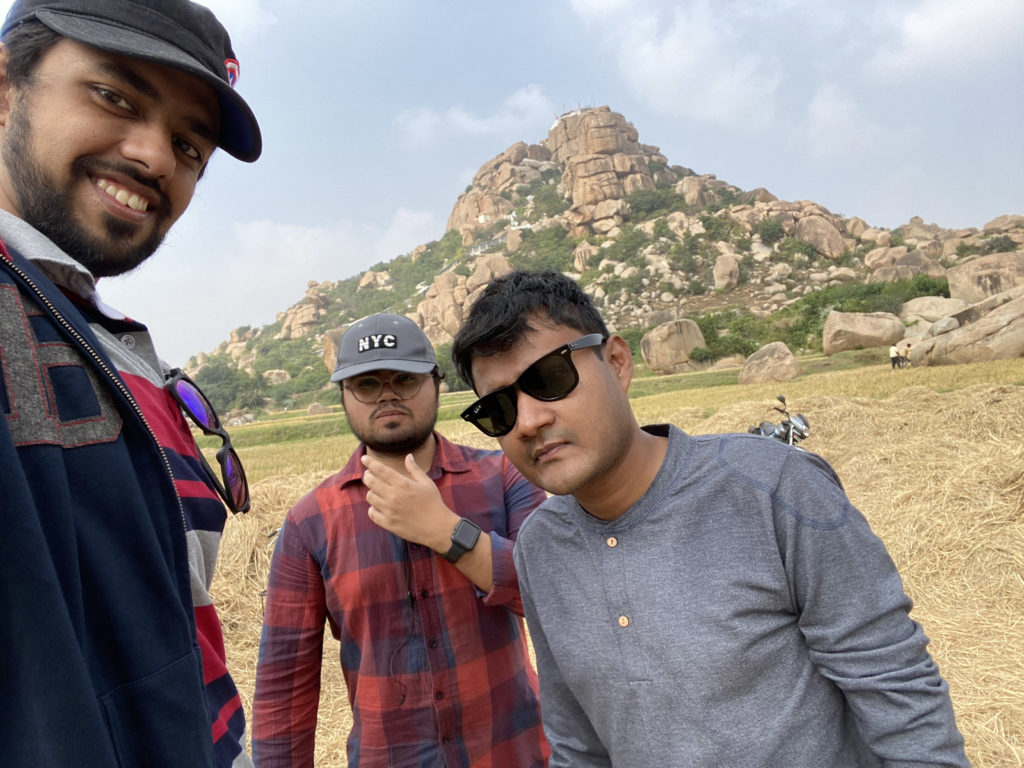
The birthplace of Lord Hanuman, the site is considered over 3000 million years old and is one of the oldest plateaus on the planet. We chose not to hit the 600+ stairs to the peak and save losing on those calories.
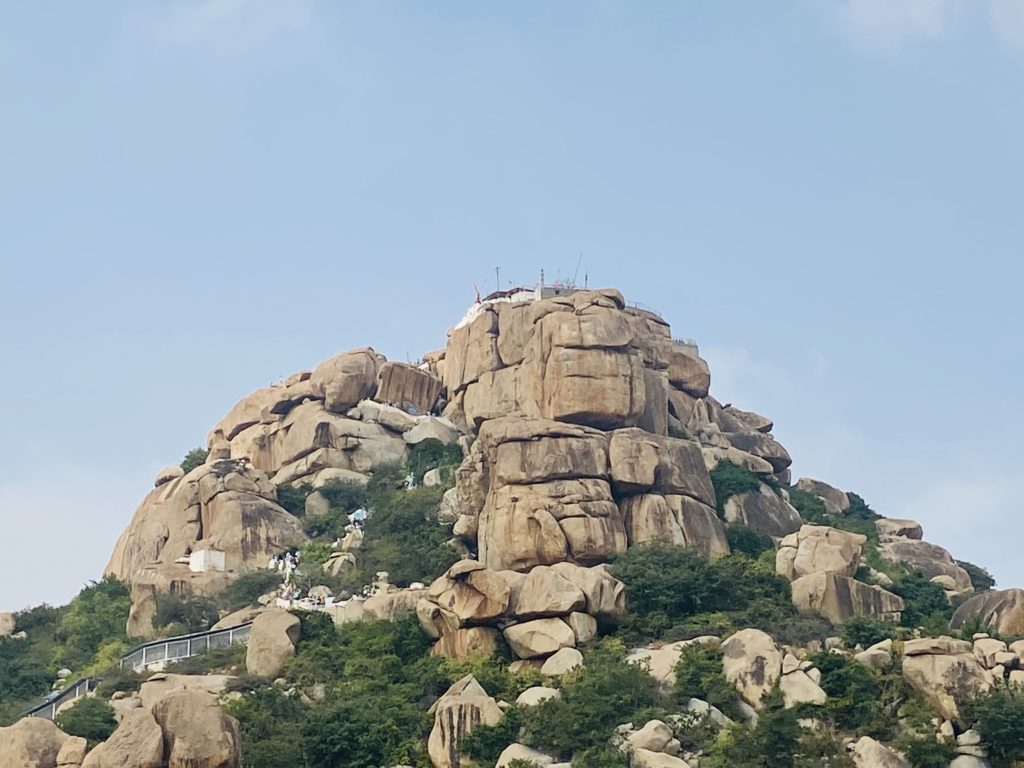
Hippie Island
A Goa-esque spot, coracle ride away from temple complex, hippie island screams peace and tranquility.
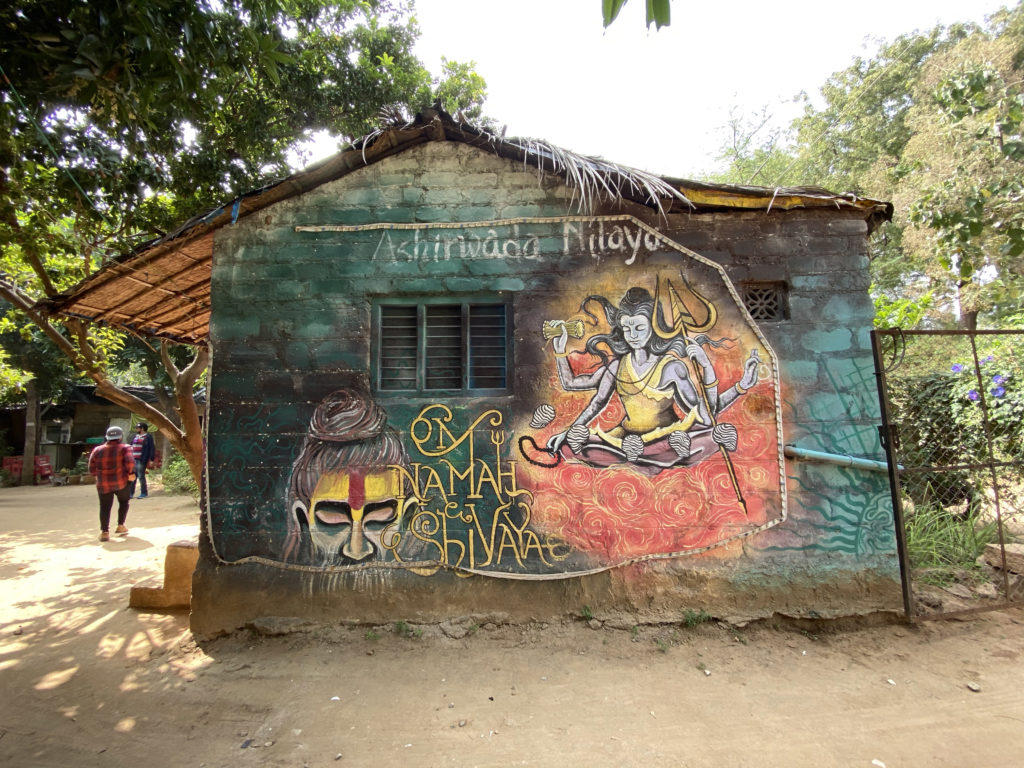
Tip Offs
- Be prepared for heat. We went in December and the sun was harsh.
- If you wish to visit during monsoon, then know that the rains fill up Tungabhadra river high enough to damage structures and bridges.
- Haggle a lot. Tourism is the major income source of resident locals. Be aware that every auto/stores/hotels are looking at extracting money for you.
- Take more time to imbibe the place if you are history buff or are generally inclined to ancient Indian art.
My Recommendation
Don’t miss the elephant bath. This is as up-close-personal as you can get with the happiest Indian elephant on the planet.
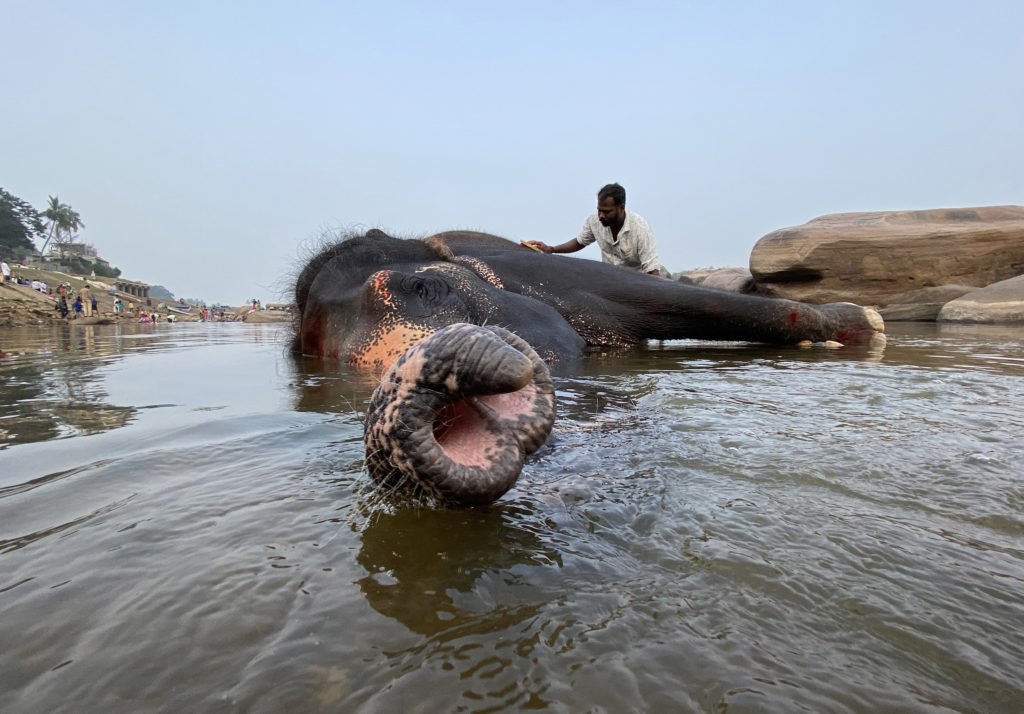
Rocking it,
Sayantan